http://www.antiatlas-journal.net/pdf/01-Amilhat-Szary-asserting-the critical-potential-of-social-sciences-arts-experiments-a-portrait-of-the-researcher-as-an-artist.pdf
antiAtlas Journal #01 - Spring 2016
Asserting the critical potential of social sciences -/ arts experiments? A portrait of the researcher as an artist
Anne-Laure Amilhat Szary
Professor of Political Geography at the Grenoble-Alpes University, head of the PACTE social sciences research centre (UMR5194) and member of the Institut Universitaire de France. The work that AL Amilhat Szary has developed with regard to borders has led her to develop the concept of a “mobile border”. Her most recent research focuses on the relationship between space and contemporary art in and about contested/disputed places. She is a founding member of the antiAtlas of Borders collective.
Keywords: experimentation, experiment, experience, experiential,sensitive, dissensus, criticism, aesthetics, politics, emancipation, discipline, disciplinary, multidisciplinarity, transdisciplinarity, institution
Acknowledgements: Drafted for a good part thanks to an informal writing residence at the Musée Dauphinois (Grenoble) offered to me by its former director, Jean Guibal, this article owes a great deal to discussions with Jean Cristofol within the framework of the antiAtlas collective, as well as with Gretchen Schiller, Sarah Mekdjian and Naïma Ghermani, my travel companions in science and friendship. Translation : André Crous
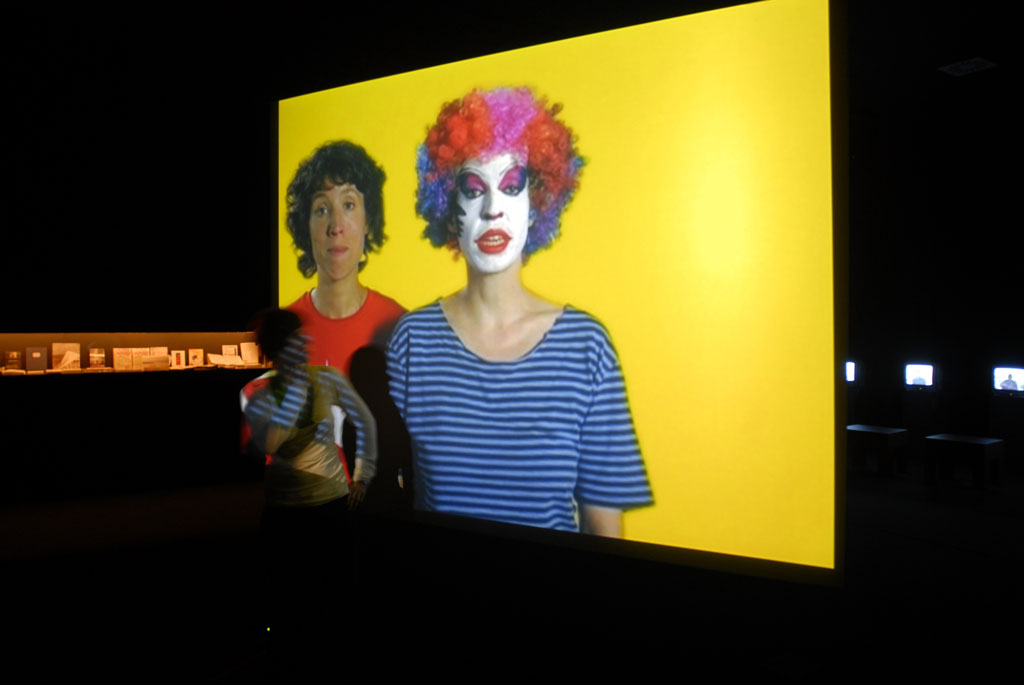
Extract of the video A Portrait of the Artist as a Worker (rmx.), installation by Ina Wudtke presented at the MuHKA in Antwerpen, © 2006 Ina Wudtke
To quote this article: Amilhat-Szary, Anne-Laure, "Asserting the critical potential of social sciences -/ arts experiments? A portrait of the researcher as an artist", published on April, 13th, 2016, antiAtlas Journal #1 | 2016, en ligne, URL : https://www.antiatlas-journal.net/01-asserting-the critical-potential-of-social-sciences-arts-experiments-a-portrait-of-the-researcher-as-an-artist, last consultation on date
I Introduction: the sciences-/art binomial, a critical tool?
a. No sooner consecrated than criticised
1. In what capacity can the sciences/arts binomial still be considered an interesting critical tool? What kinds of shifts are occurring for those who participate in initiatives laying claim to this combination, both as their initiators and as their audiences? Is it about generating knowledge in a different way, or making the aesthetic dimension of this crossing perceptible? Might this association of terms be part of a politically emancipatory perspective? At the spot where science and art are joined together, the ways in which knowledge and power relations shift remain a terra incognita to be explored.
The sciences-/art binomial, a critical tool?
At the time of this writing, the mechanisms linking arts with science, or sciences with art, are frequently criticised by artists… while scientists are moving to make a more frequent use of them: a paradox that only underlines how problematic this merger is! Behind the nouns (science and art), which should be used in the plural (sciences and arts) in order to avoid to strip them of their complexity, a process is at work. For those involved in such practise-based research, the challenge is to move between these categories without simplifying or exploiting the other and its position. However, we end up doing exactly that if we fail to address the issue explicitly. All too often, the scientist uses the media proposed by the artist to disseminate the results of his research in a different way; the artist uses the results and the research methods to create in a different way without recognising how the work of each has been jointly co-produced.
next...
2. From my scientist’s point of view, I am interested in art particularly insofar as it is capable of steering the production of knowledge towards an area that concerns it only on rare occasions, namely its recipients: Is it possible to produce science for anyone other than our peers? By opening debate on the links that are formed with those who are exposed to “arts-sciences initiatives” (a Francophone expression better known in the Anglophone world as “arts-based research” or “practise-based research”), I hope to get a better understanding of how it might involve its audience in an aesthetic relationship that opens up both cognitive and political possibilities. In fact, it is about contributing to thinking about the ways of disseminating the advances in knowledge in ways that would allow new concepts to be conveyed, while requiring personal (and potentially political) involvement vis-à-vis the fruits of the rational production of knowledge.
From my scientist’s point of view…
This presupposes that knowledge makes it possible to pull the levers for action – and therefore, of power – for those with whom it is shared. This concept of emancipatory education is an old one, and it continues to be activated, for example, within the framework of people’s university and evening classes; however, its modalities have been greatly affected by the changing modes of academic valorisation. Researchers today are evaluated on the basis of their production of specialised articles that are not accessible to the general public for two reasons – one old (they are too complicated to read) and the other more recent (the cost of accessing them has skyrocketed because of the privatisation of electronic publishing). Traditionally, popularisation used to happen through books that provide overviews, but its modus operandi is quickly evolving. The dynamic between arts and sciences is one of the forms expressing this change, in the middle of a nebulous web of new productions that are mostly circulated in electronic format (whether on blogs, in the form of web documentaries, by using social networks or by bypassing paywalls to access reference publications, a form of scientific hacking on the rise in countries both rich and poor, as illustrated by the following animated map)
next...
Image 2: Who’s downloading pirated papers? Hourly downloads from the Sci-Hub platform on February 5th, 2016. Source http://www.sciencemag.org/news/2016/04/whos-downloading-pirated-papers-everyone). Sci-Hub activity hour by hour on 5 February 2016.
3. To push the sciences in the direction of art is to reframe the question of aesthetics, an area where the dominant academic discourse has long remained very traditional and functioned only when confronted with a “work of art” – or something that produces art works – and a very classical conception of art that dates back to the 18th century… as if the return of a discussion about science’s relationship to art still relied on an equivalence between aesthetics and art, that is, on a discourse that does not make room for artistic practice as a process of experimentation. To define aesthetics as the implementation of a sensitive emotion is to facilitate a debate on the reception of scientific messages in society beyond their primary targets (scientific communities) and to admit that this expansion transforms both the form and the content of the message: This repositioning of the sciences also produces a change in the knowledge content that is produced. This implies acknowledging that the trajectory of an invention or an idea undoubtedly undergoes the same type of evolution as all the other social processes, passing from a hierarchical structure (from the place where the sciences are produced to the general public via a series of intermediary distributors and users in order to valorise and popularise) to a horizontal structure that would put the researcher in direct contact with a heterogeneous audience (industrialists and artists, as well as primary and secondary school teachers and all kinds of curious individuals and amateurs).
next...
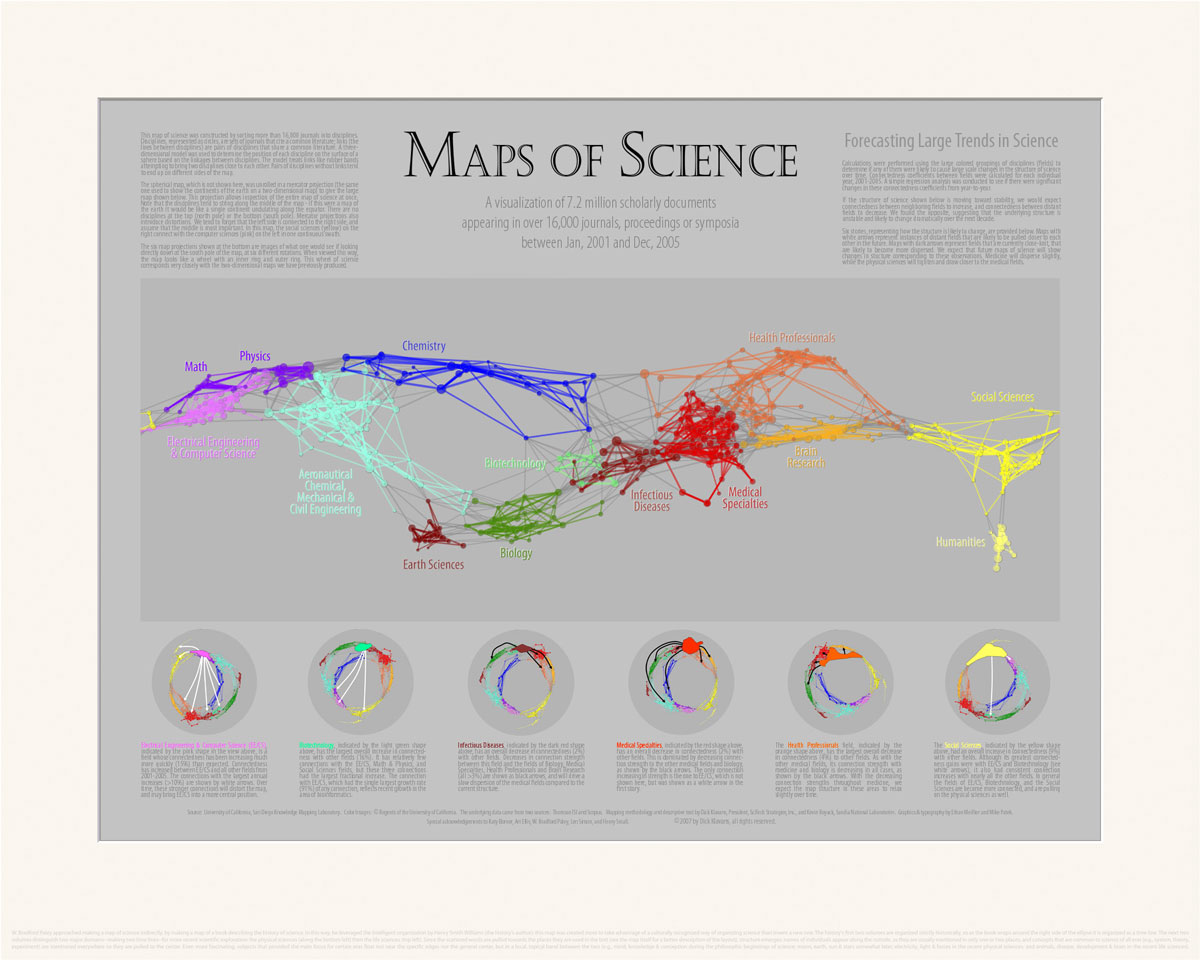
Image 3: Mapping science, territorializing disciplines. Source : Maps of Science: Forecasting Large Trends in Science, extrait de Klavans, Richard and Kevin W. Boyack. (2006). “Quantitative Evaluation of Large Maps of Science.” Scientometrics 68 (3): 475-499, v
b. An step aside towards the specificity of a link between 'social' sciences -/ arts
4. In this vast debate, I propose here to take a step aside into the adventurous realm of the sciences-/arts apparatus in order to question the potential specificity of social sciences researchers working alongside artistic creators from various fields. For this reason, I offer that the term “sciences” goes first, arts second, in order to express a point of view, reversing the current expression: from “arts-sciences” to “sciences-/arts”. It is important here to explore the critical potential of the punctuation mark – the hyphen or the slash – between the two words, sciences and arts. The punctuation mark seems to be particularly significant when the first term is preceded by a qualifying adjective that modulates its relationship with reality: Social or human sciences, which take “as [their] object man as an empirical entity” (Foucault 1988), have the particularity of deciphering objects in which they have a stake (Piaget 1972).
A step aside into the adventurous realm of the sciences-/arts apparatus
The concepts that they produce will, in turn, change the same human situations that informed their analysis. Contemporary art, working on form and language, is coming closer and closer to the critical approaches of social science research. Thus, in this case, the interaction between the arts and sciences is no longer formulated in terms of bringing together opposites but in terms of modulating proximate universes (Delacourt, Schneller et al., 2016). In what way can this proximity be heuristic? Cognitive? Disruptive? Political?
In a special issue on the state of the physical sciences, published upon the discovery of the Higgs boson, the leading journal for the dissemination of research, The Scientific American included an article devoted to the interactions between the sciences and the arts, with its title emphasising the “creative collisions” that were likely to occur in ad hoc structures. We can relate the social sciences-/arts experiments to “political collisions” and their status as an event operator (a dissensus trigger), without being guilty of the naïveté already denounced as stale “political art” (Baqué 2004). Here I bring back the power of opening possibilities to the epistemic dimension of these scientific and artistic productions.
Can working on the relationships between the aesthetic regime and the epistemological regime allow us to understand the political conditions of “sciences-/arts” practises? Examining the dead ends of a binary reduction of the clash between the two terms (art would do what science doesn’t do, and vice versa, in a complementary way) seems to make it possible to offer forms of making our way out of a “disciplinary crisis” (Compagnon 2011) that many observers are reporting – as if the institutional functioning of the scientific disciplines had ended up regimenting them.
next...
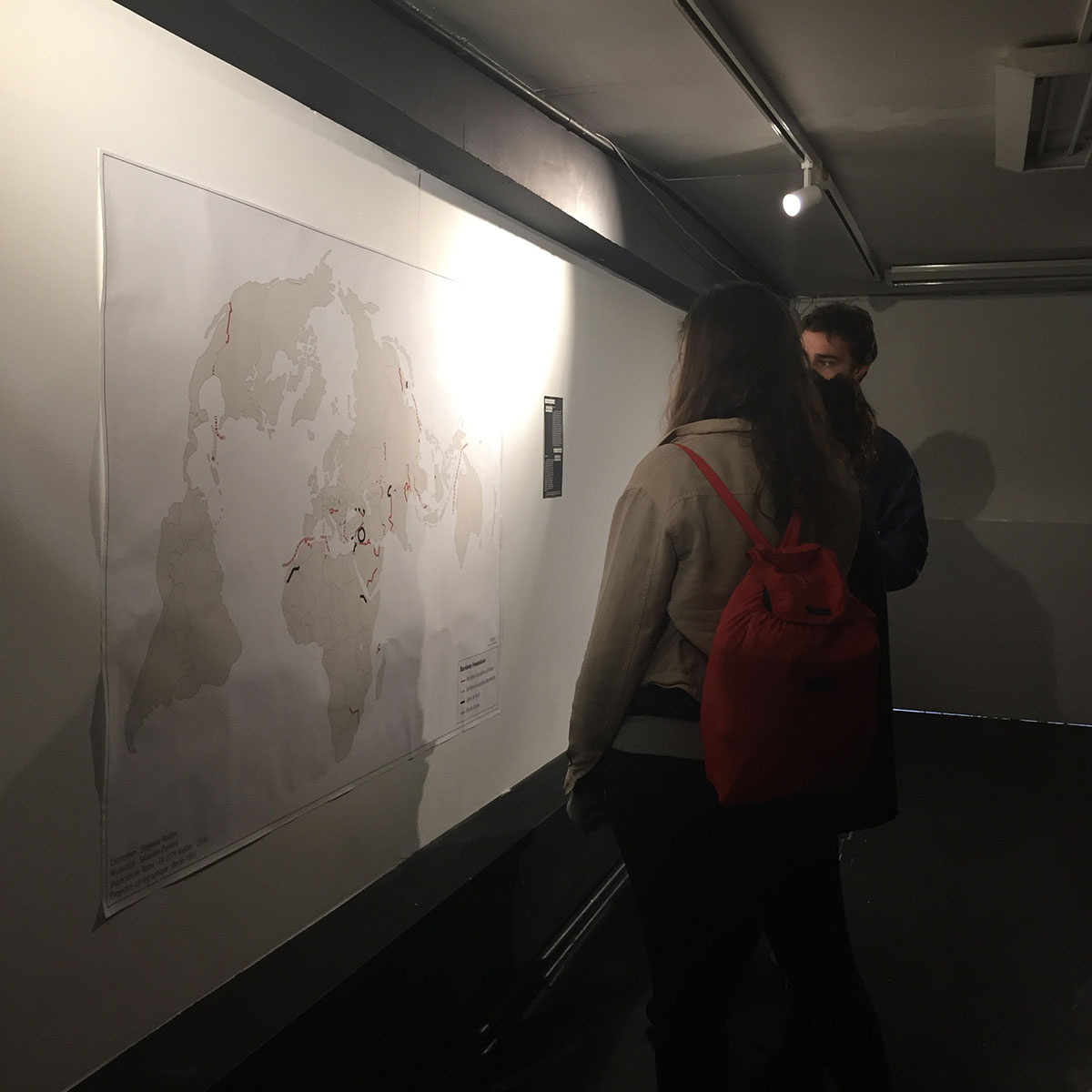
Illustration 4 : Other ways of unfolding maps to open scientific dialogues. Coding-Decoding borders, Work by S. Rosière, antiAtlas Exhition in Brussels 2016 (http://www.antiatlas.net/coder-et-ecoder-les-frontieres-bruxelles-2016/) photograph © Anne-Laure Amilhat Szary
c. The true, the beautiful and the good
5.In its subheadings, the article reproduces, in part, the Platonic axiology between the true, the beautiful and the good... One of the works of Victor Cousin, a leading figure in the teaching of philosophy who taught at the Sorbonne in the 19th century, was published under the title Lectures on the True, the Beautiful and the Good (Cousin 1853), and the book was immediately hailed a great success. This equivalence between the terms “True”, “Beautiful” and “Good” (whose capital letters turn them into closed categories) appeared at a time when the university set itself the project of closing off the production of knowledge within siloed disciplines: The metaphysical perspective legitimised the partitioning of knowledge and practices. Diverting these three notions of “true”, “beautiful” and “good” allows me to better understand how disciplinary and institutional confinement can block the critical potential of interactions between sciences and the arts and offers some proposals to resume this debate.
The richness of sciences-/arts interactions is often ascribed to the creative indisciplinarity of artistic practices that ignore segmentation in the fields of scientific production (Loty 2005, Huys & Vernant 2012) or sometimes even ascribed to their extradisciplinarity (Holmes 2007, 2009). This ability to escape the framework would also be one of evading the norms linked to it – thus, to produce the conditions for subversive political action. This potential exists, but it is not systematic, as the worlds of art have their own rules, especially in terms of being recognised by the market and the worlds of criticism that enclose them in another way.
All these terms are problematic both on their own and in the way they are translated. Therefore, my consideration starts with the criticism of the categories of “artist” and “scientist” in order to focus on the production modes and systems that these actors employ in their practices. With regard to the sciences-/arts crossover, English terminology favours arts-based research and practice-based research over arts-sciences and sciences-arts... The Quebecois have even coined the notion of recherche-création (creative research or practise-based research) ... The proposal I am making here involves moving the spotlight from enhancing the research result to examining this result’s maturation process.
I begin by analysing the discourses that justify these arts-/sciences crossovers in order to show both the structural tendencies and the call effects connected to the development of institutions and markets in which the actors of these “sciences-/arts” co-productions evolve. It therefore appears that the social sciences have a special place in these combinations, which is exactly what I propose to make explicit in this text.
next...
II. Beyond the beautiful. Of what is form the name?
a. A desperate quest for innovation whose analogical model would be art?
6. Arts-/sciences, sciences-/arts: What is it all about, in fact, if not the relatively recent emergence of collaborations between people from the field of academic knowledge production on the one hand and actors who position themselves in the field of various creative practices on the other? Paradoxically, the expression excludes being able to be both a scientist and an artist at the same time, which of course does not reflect reality: The creative genius neither equates madness nor does it excludes rationality (the link between musical composition and mathematics claimed by P. Boulez dates back to at least J.S. Bach or B. Bartók), but the history of arts and sciences imposed this distinction only for a short period, namely the modern era. The thought of apprehending this dualism coincides with A. Baumgarten’s (1750) creation of aesthetics as a philosophy of the art captured in its works, at the very moment when the field of technique was stripped of all its expressive subjectivity.
The union of the two terms is based on the implicit acceptance that they are distinct from each other. This distinction is such that joining them together through punctuation into the same syntagm can immediately appear as dialectical. The order of the terms is not insignificant, and one of the pairs (“arts-/sciences”) seems to be used more often than the other: As if art (or the artist, a term that remains wholly ambiguous, see Chateau 2000) could invest the scientific territories more easily than science (or the scientist) could really be prepared to open up to artistic companionship and practice...
next...
7. These word associations are starting to have their own history, and it is important to value this memory so as not to always start from the same vague generalities. The Leonardo (The International Society for the Arts, Science and Technology) journal was founded in 1968 (published by the MIT Press in the Boston metropolitan area): The impetus came from scientists who wanted to question technological mediation in a different way. Between this pioneering moment and the current effervescence and deployment of combinations and cross-fertilisation, we still observe a significant gap. It is important to understand how one goes from a minority practice favoured by “smugglers” (people successfully creating the places of these hybridisations) to a generalisation of the idea that has led to its rapid dissemination over the past a decade. What does a phenomenon that becomes fashionable mean (Filippone 2015)?
From the point of view of manufacturing knowledge, the emergence of “art-sciences” practices can be compared to a reflexive double bind – between “positivist disenchantment” and “aesthetic exaltation” (Boucheron 2011). To understand what is at stake in the relationship between these two terms, we have to overcome a double temptation, namely of instrumentalising the other: using art in science and sciences in the arts without taking the care nor the time to analyse what these transfers imply. However, most of the texts that question the links between science and the arts seek to reduce this dialectic by looking for common points: On this path, it is soon revealed that linking the sciences to the arts makes it possible to rethink the subjective dimension of cognitive processes that has been forgotten for decades because of the dominant discourse of science as an objective discourse.
next...
8. Is art merely an analogical model of disruption that allows a renewal of the narrative of sciences history? Talking about arts-/sciences – or sciences-/arts? – invites us to consider the mechanisms of “inventive thought” that has developed since the 1970s and 1980s. A brief historical overview will demonstrate to what extent this inventive necessity is nothing new.
If this necessity seems obvious in the artistic realm, where the act of production is most often identified with the process of creation, it is in fact much more obvious than one imagines in the production of knowledge. The very notion of “invention” or “discovery” emphasises the discontinuous dimension of cognitive processes. This human and individual part of processes is emphasised first of all by the inventors themselves. Those among them who have retrospectively written the stories of their great scientific discoveries all return to the necessity of stepping aside, which, by itself, makes it possible to deviate from the fields of ploughed hypotheses to reach an unprecedented formulation. “The freedom at stake here is a matter of initiative, integration and setback. It is the freedom to accept a piece of data that does not fit the system and will transform the whole interpretation” (Claude Bernard, 1856). Bernard later mentions the “inventive moment of discovery” and the “emergence of a new perception” ... finally placing himself at the crossroads between an exceptional contingency and a sensitive faculty that makes it possible for him to capture the innovative potential. J. Schlanger, in her commentary on the text, mentions the “seduction” of these writings that “bring us closer to the inventive experience as a heroic experience”.
If this individuality of the scientific experiment has long been silenced, it is because the cognitive process takes place in a mode of the objectification of knowledge that makes it necessary to erase this initial gap. Validation before “the tribunals of reason” (Latour 1989 [1987]) then plays a second decisive role in the production of science, in other words, in confirming a checkable scientificity of facts and concepts. B. Latour confirms the importance of the “second” aspect of science: validation, which comes after discovery (just as art can be divided into the poetic side and the aesthetic side). He insinuates that the scientific side has less to do with the content of a proposal than with the way in which it relates to those who will be able to seize it: the problem of administering the proof passes through the circles within which it will be able to happen. Scientists have constructed the notion of objectivity by asymmetrically determining “what non-scientists are” (p. 445) and excluding them from this validation. Since the turn of the 19th/20th centuries, science has quickly become institutionalised, identifying disciplinary fields conceived as spaces to validate a type of knowledge, with the academic organisation rehashing a positivist approach from the 18th century. In a surprisingly comparable way, the automation of the “scientific field” happened soon after that of the artistic field (Bourdieu 1986).
next...
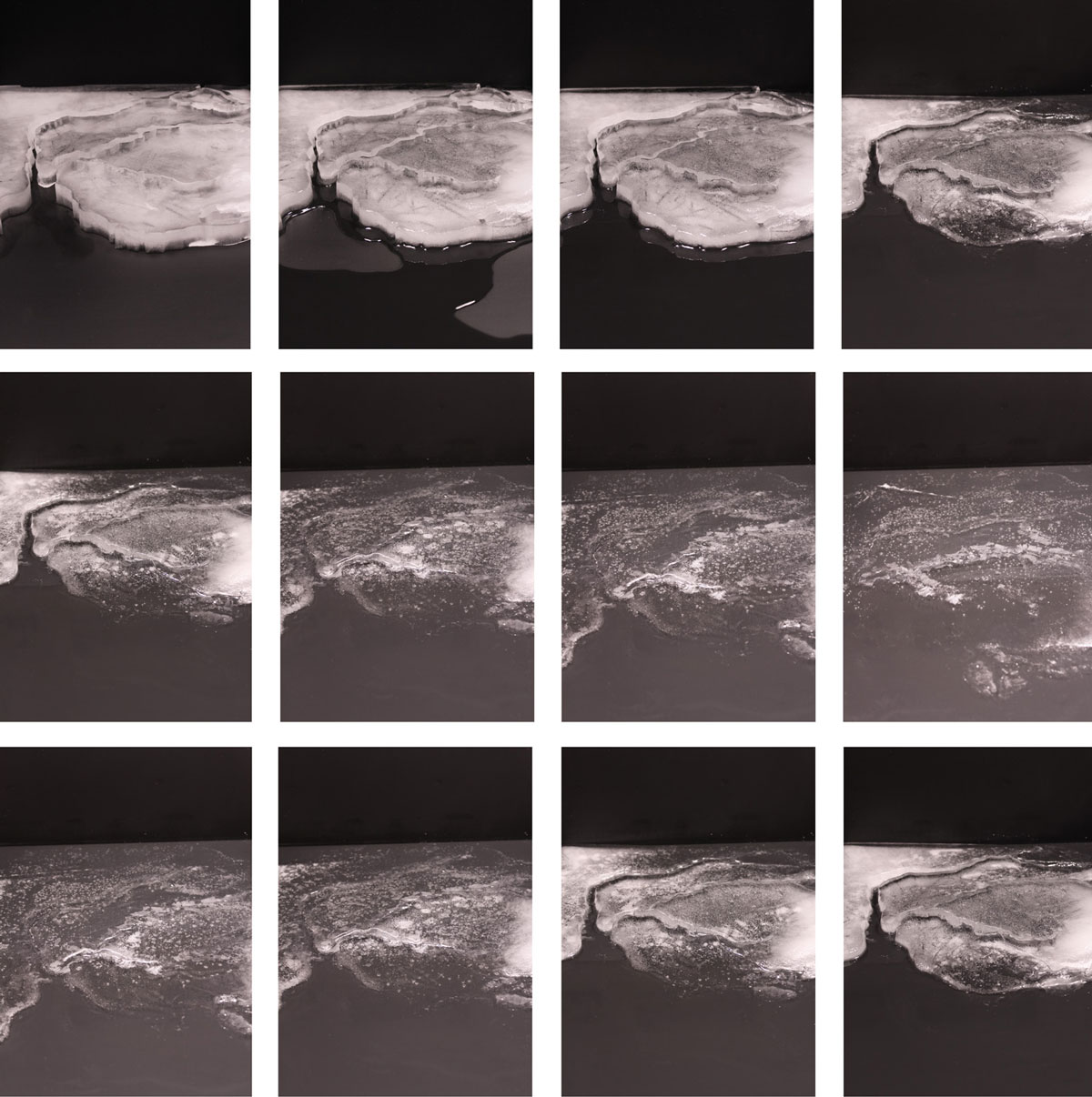
Image 5: Long and short term of experimentation : melting and reconstitution of borders in the Plata estuary. Extract of the animation that composes the “Tratado de Limites” (Boundary treaty) installation presented by Marina Camargo at the Porto Alegre Biennal in 2011. Courtesy the artist.
9.Positioning the creative fact within a “‘regime of singularity’ that, unlike the ‘community regime’, favours that which is out of the ordinary, original and unique” (Heinich 2005, p. 40), seems to allow freedom from alienating frameworks of scientific thought, insofar as any idea must be governed by collective validation.
Positioning the creative fact within a ‘regime of singularity’
But once the centrality of creativity in the two research processes (artistic and scientific) has been established, the joining of the terms “arts” and “sciences” leads us to deconstruct both our expectations of them and their results, in other words, to question the processes of knowledge building: What does it mean “to seek”? No “knowledge that does not presuppose and constitute at the same time power relations”, as M. Foucault reminds us (Foucault 1997), who continues, “These ‘power-knowledge relations’ are to be analysed, therefore, not on the basis of a subject of knowledge who is or is not free in relation to the power system ... In short, (...) [it is] power-knowledge, the processes and struggles that traverse it and of which it is made up, that determines the forms and possible domains of knowledge” (Foucault, ibid.). This warning alerts us to the possible drifts in the relationship between arts and sciences.
next...
10. What is in play in the relationships that are forged between sciences and the arts is certainly a desire to shift the hierarchies inherent in the manufacturing and structuring of knowledge. In his Compositionist Manifesto, Bruno Latour referred to this “horizon of horizontality” when he launched his school of political arts in 2010, which offers a master’s degree in arts-sciences called “SPEAP” (“experimental programme in political arts”) (Latour 2010, 2011). In order to go beyond this notion of diplomacy/negotiation conceived as a “non-totalising resolution of antagonisms” (ibid.), I propose considering that the strength of sciences-arts devices lies primarily in their performative dimension.
They reveal that an apprenticeship is always a cognitive process that mobilises both the one who receives and the one who imparts knowledge, in a relationship comparable to the one induced by aesthetics. That is also true of these horizontal sciences-arts devices, insofar as they take on their collective (Fourmentraux 2008b) and therefore, potentially, political dimension.
A desire to shift hierarchies
In the face of “hard” sciences, it is the artists who have the responsibility to make this known. By not leaving this responsibility of highlighting a dialectical thought to the “arts”, the “social sciences” are likely to engage, in a different way, the critical potential of mobilisation that the sciences-/arts devices initiate.
next...
b. The impact of the post-representational shift on both scientific and artistic thoughts and practices
11. Bruno Latour provocatively states that “[t]here is only one history shared by art and science: let’s call it a history of representations in the broadest sense” (2012, p. 91). Proposing to emphasise the necessity of mediation in the production of this knowledge makes it possible to better raise the question of what differentiates or connects, in both their methods and their outcome, the type of sciences with which artistic interventions are involved. The relationship to the representation of knowledge obviously differs according to the languages they use, and the apparent specificity of the social sciences is to function on the basis of the words of the common language, used every day, differing from a scientific language that can only be deciphered after a long term commitment.
'There is only one history shared by art and science', Bruno Latour's provocative statement
But the production of all knowledge involves the production of a language whose validation happens when it encounters the collective. This stage of the collective mediation of cognitive processing is necessary in all scientific domains, including in those that are unfolding more in the order of calculation: The history of discoveries readily emphasises the importance of naming what one is working on: “The evolution of knowledge involves a metamorphosis of the languages. (...) It is here that we reach the heuristic importance of finding the term” (Schlanger, ibid.).
It is exactly this kind of relationship with a common language that can be described as a manufacturing of representation. Of course, these words why express “how” things happen are never the reality of those but rather one of their representations. Pushing this argument further, it is possible to assimilate representation with narrative and ask: “How could researchers express themselves without going through a narrative, that is to say, going through the series of transformations that they impose on fictional characters from the beginning to the end of their articles?” (Latour 2012, p. 92). This assimilation is not obvious: A narrative is defined by speaking personally while the construction of representations is a process that is collective because it is intersubjective. To propose, as B. Latour does here, considering that any narrative has a fictional basis is to take the added step of relativising the universal possibility of seeking the True.
next...
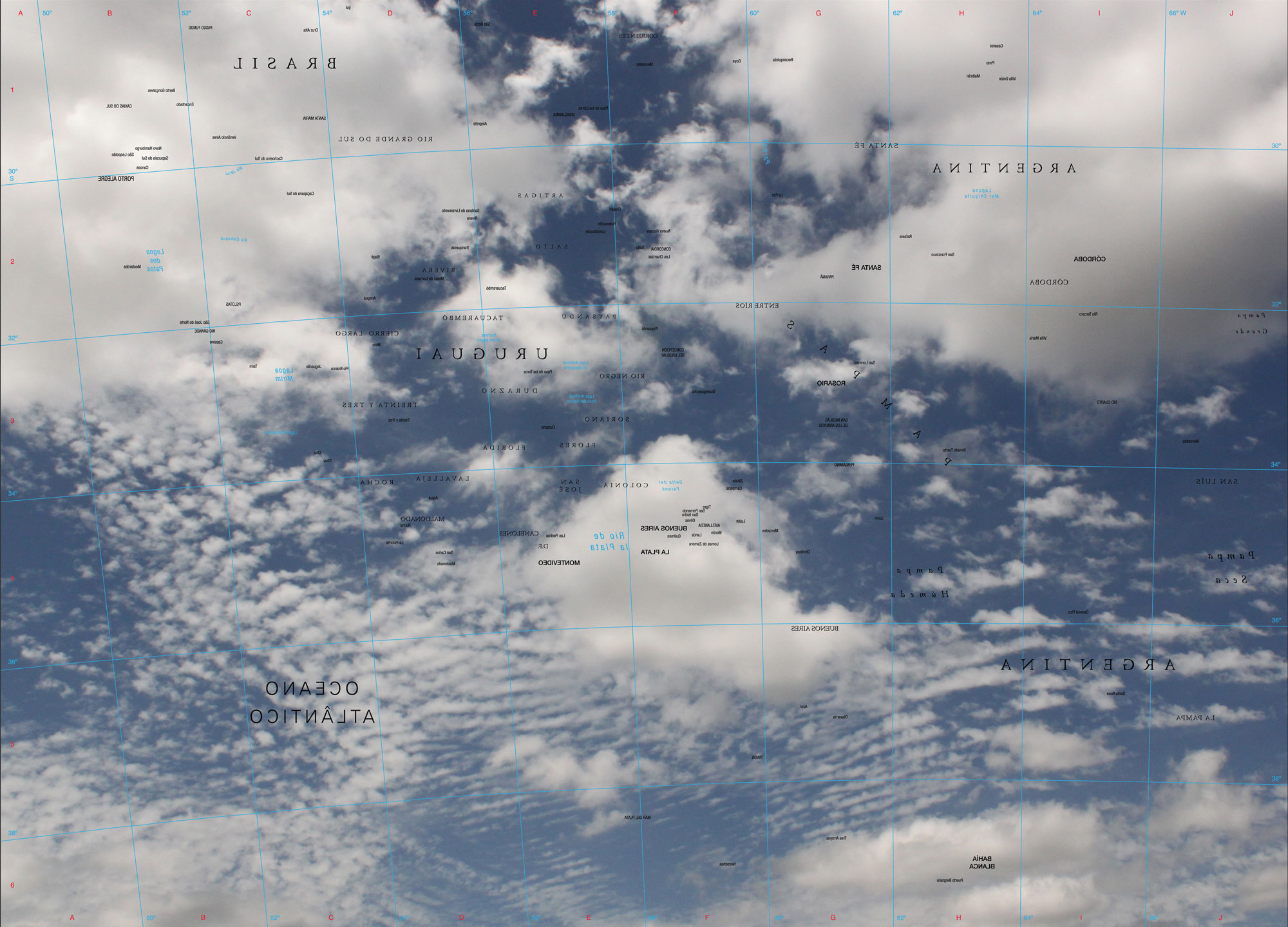
Image 6, adjacent: Getting lost to find one’s bearings : oneiric counter-cartographies. Map that composes the “Tratado de Limites” (Boundary treaty) installation presented by Marina Camargo at the Porto Alegre Biennal in 2011. Courtesy the artist.
12.While all types of science use language to express and discuss their results, this relationship is not built on the same level. For the social sciences, it is a question not of putting the results acquired on the bench or the spreadsheet into words but of working on the text itself as part of a conceptualisation effort that Michel Foucault initially described as “meta-epistemological”; he later proposed other prefixes (“ana” or “hypo-epistemological”) because of “the invincible impression of haziness, inexactitude, and imprecision left by almost all the human sciences” (Foucault 1988).
All types of science use language but…
For a general public that has not mastered the technical and encrypted languages of experimental sciences, the challenge accessing them can partially justify the search for a form of meta-linguistic communication and explain in part why this type of science was eager to seek a more open form of implementing its results through partnerships with artists and fiction writers. In an interview I did with Catherine Filippone (2015, 15), I was able to suggest that: “In the social sciences, everyone still thinks access is easier, but of course that’s not the case. From our scientific point of view, it is about making results accessible that are complex and, in the case of the antiAtlas of Borders, that’s how it was conceived; it was really a question of presenting the changes in borders during the 21st century to a larger number of people, even as we realise how disturbing this concept is and how difficult it is to convey.”
next...
13. The debate, such as we initiate it here, highlights the internal contradictions contained in these two generic terms, arts and sciences: Everything happens, in fact, as if their association ultimately reduced these two universes to their dominant perception – the sciences reduced to their “hard” or experimental component and the arts assimilated to merely visual practices (Ambrožič & Vettese 2013). This easy option arises from an initial overvaluation of the image, both as a form of artistic expression and as a tool to model theoretical schemas and represent scientific results (Bredekamp 2010) in a problematic symmetry: “Whether in the realm of products or of activities, what are ends for the artist are means for the scientist, and vice versa” (Kuhn 1977, pp. 342–343).
Traditionally, in scientific fields, the role of the image was to complement the text. It was given the secondary status of an illustration.
The internal contradictions contained in these two generic terms, arts and sciences
Except for certain precursors (in particular, the images of Jean Painlevé, see Berg, Bellows, McDougall, 2000), it is only very recently that the sciences started calling into question their ambiguous relationship with visual elements, whose objectivity is challenged, and which, on the contrary, are now mobilised to enhance research reflexivity and performativity. We are now seeking to unravel what is happening when providing visual evidence: “The idea of seeing the atom in a direct and unmediated manner is an illusion”, said Charlotte Bigg, historian of science at the Alexandre Koyré Center in a recent and very well-illustrated interview (Baker 2016).
next...
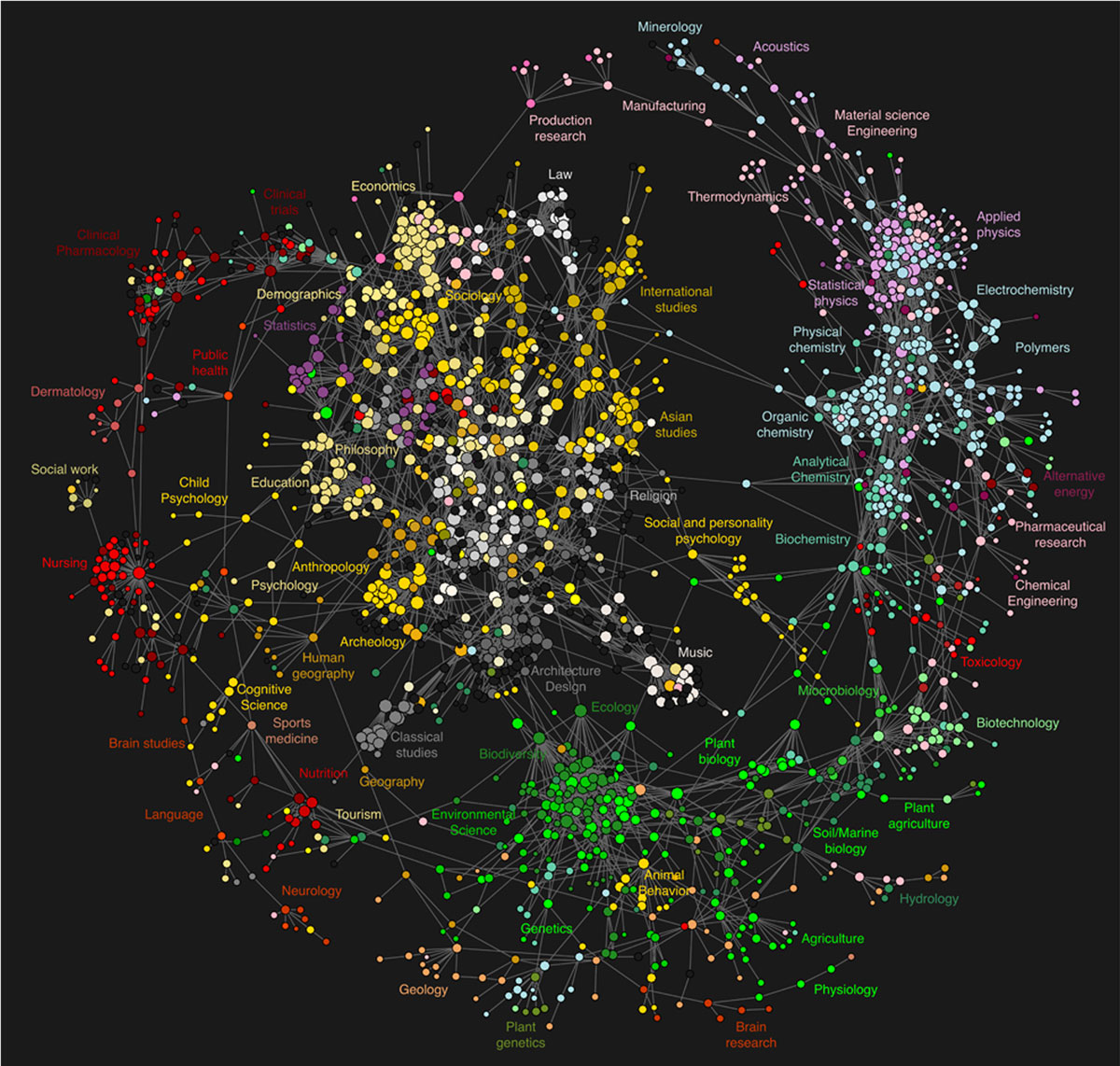
Illustration 7 : Interdisciplinarity : the black holes of the scientific galaxy ? Source : Los Alamos National Laboratory, 2008, Map of science derived from clickstream data http://scimaps.org/maps/map/a_clickstream_map_of_83/detail
14. The use of data visualisation technologies, which are evolving at a high speed, makes it possible to consider a kind of “visual turn in research” (Wesseling 2011). In the hard or experimental sciences, science indeed produces images that can now be analysed through the prism of contemporary aesthetics bred in this new relationship towards visual culture. Thus, analysing the status of representations throughout the history of the hard sciences opens avenues to understanding in a different way the proliferation of the arts-/sciences initiatives that involve them, and especially concerning the exact sciences, which produce many images that have been little used until recently. This can range from collections of scientific images evaluated according to their plastic qualities to creations based on visual material produced during the research process, or even by changing the research goals to ones that are no longer scientific but artistic (see the project entitled Regard sensible sur la roche, matière atemporelle [A sensitive gaze on the rock, atemporal matter] carried out at La Diagonale, an arts-sciences melting pot in the heart of the plateau de Saclay, http://www.ladiagonale-paris-saclay.fr/nos-actions/particles/). Behind this form of aesthetics, it is impossible not to ask what the sciences using art can gain by moving in its direction: To reveal or to make beautiful, means making accessible and simultaneously acceptable, especially in domains whose practices raise some ethical questions (i.e. intervening on the genome or on human–machine interfaces at the nanoscale).
A “visual turn in research”?
And yet, this debate is often erased because the general public has a certain expectation of the “aesthetics of science”, namely the type of beauty that scientific (in particular, image-based) productions contain in themselves (see Clair, 2002). At least, this is how one researcher, Jean-Paul Vanderlinden, an economist invested in an arts-/sciences approach, perceives it. In an interview with C. Filippone, he raises the question of the paradox of research objects’ visibility/readability in the human sciences: “Social science and humanities researchers have little to show; people are fond of rockets, robots, very technological things ... the social sciences work with words, objects and images. We rarely have the opportunity to show our work, apart from some big stars on the radio. Their objects reside within themselves” (Jean-Paul Vanderlinden, in Filippone, 2015, 15). While working on society itself and with its words, humanities and the social sciences make up an area that the apparent accessibility of language makes less interesting to explore. The recent passion for maps and their artistic exploration-deconstruction (see the project, http://lafindescartes.net/) undoubtedly contributes to this momentum towards an iconography that the public appreciates and whose political and aesthetic nature the researcher showcases.
This “visual turn in research” positions the social sciences in a different way; the latter question the performative content of images that engage both those who produce and those who receive them. In so doing, they open up a critical reflection on the status, visibility and “reality” of images that is transversal to the artistic and scientific fields. In furtherance of what Michel Foucault suggested about a fiction that “consists not in showing the invisible, but in showing the extent to which the invisibility of the visible is invisible” (Foucault 1966), images are no longer used to illustrate but to be the aesthetic trigger of a relationship. There is a gradual shift from manufacturing common sense (Hall 1997) to the idea that a medium or a concept now opens up onto a diversity of interpretations.
next...
15.Many researchers in the humanities have proposed working creatively from language raw material, namely the transcriptions of interviews collected during their fieldwork, and transforming what used to remain behind the scenes of the production of knowledge into a form of artistic expression. Following Jean Rouch’s seminal explorations, the process was used by Géraldine Pratt and Caleb Johnston when they were developing a “testimonial play” entitled Nanay, written in 2007-08 and presented to the public between 2009 and 2013 (Pratt & Johnston 2013). These two authors (a scientist and a professional director), turned the words collected during fieldwork into a theatre performance. Their initial goal was to confront the Canadian middle class with its own contradictions: the bosses of Filipino domestic workers (who employ them to take care of their own children under temporary migratory statutes that are very restrictive for the workers and force them to leave their own families behind) are also cultural consumers: They were able to become aware of their own social condition at the theatre. Ethnologist Nicola Mai also used this technique as the formal basis of his “docu-fiction” works. In Normal (2012; 65 minutes, https://vimeo.com/album/2188492/video/50289487), he directs actors tasked with playing the sex workers interviewed in his research work without the character of the researcher being seen onscreen: This first work contains only the answers of the respondents. Of course, his intention is to preserve the anonymity of the vulnerable individuals with whom he works but especially to question the position of observation. By sharing his point of view as a scientist with the viewer of his films, he questions the method of the interview and the relations that it generates in a different way than before, including the voyeuristic dimension that the viewers of Normal discover. In his next work, Samira (2014), Nicola Mai goes further by putting onscreen his own role as a researcher in the filmed narrative, which creates a mise en abyme.
These approaches that call into question the representations’ unifying power and underlining the need to engage the receivers or the public in receiving them are increasingly characterized as non-representational (or, at least, “more than representational”, see Thrift 2008). Would what Sophie Wahnich points out about theatre – that it “turns emotion into thought. A thought that is both shared by all the viewers and still experienced in a singular way by each of them during the show, all of whom can then debate it elsewhere in a metabolised form”– be applicable to relationships built around all sciences-/arts partnerships?
next...
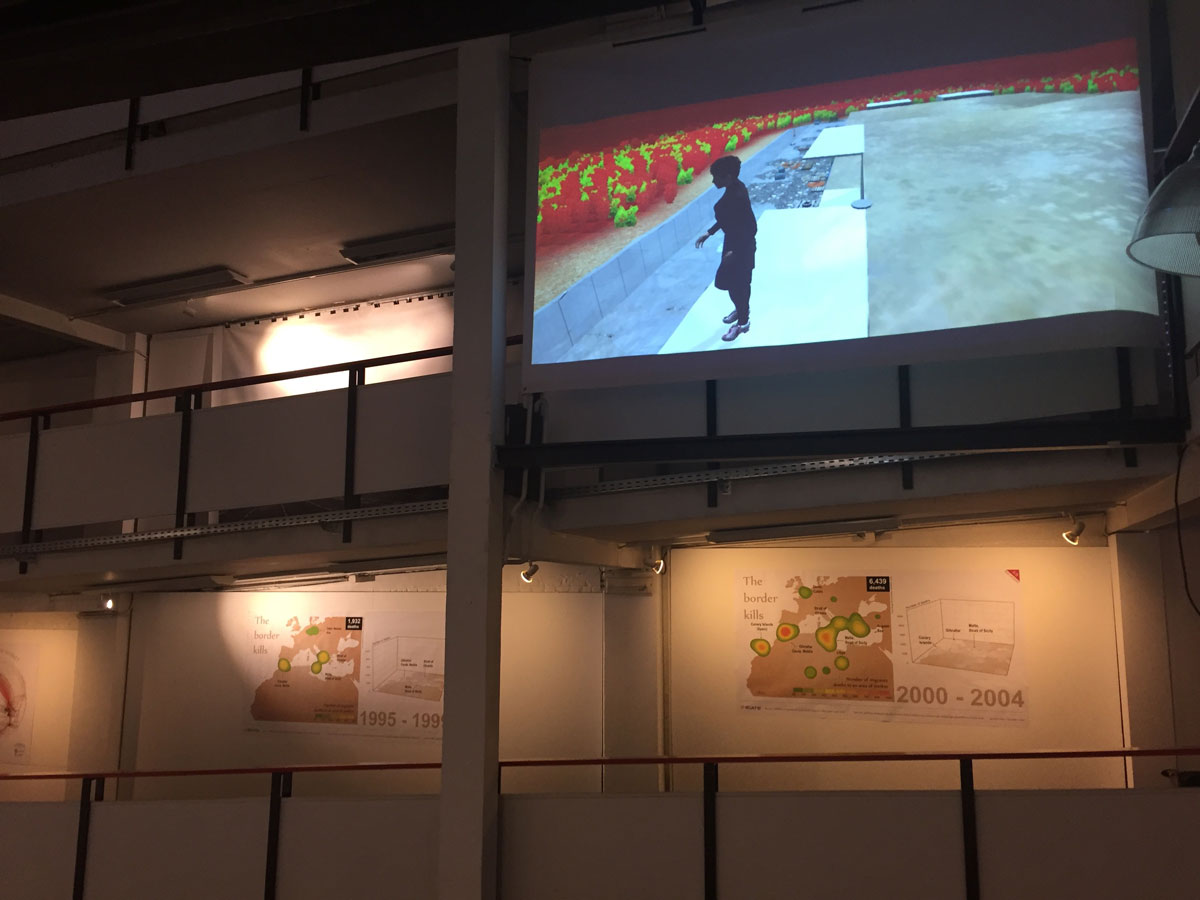
Illustration 8 : Bring together to think collectively ? The status of sciences-/art exhbitions. Coding-Decoding borders, antiAtlas Exhition in Brussels 2016 [lien possible vers http://www.antiatlas.net/coder-et-ecoder-les-frontieres-bruxelles-2016/ ] photograph © Anne-Laire Amilhat Szary
16. The development of the use of “more than textual”, in terms of both iconography and speech, makes it necessary to reconsider the relationship between illustration and text in cognitive processes (Gross 2006) but also to work on what is involved in conveying an idea. The concept of mediation appears to be crucial to developing knowledge. The image – or, more generally, the artistic intervention – crops up on this level of intercession when formulating and conveying a message. In France, the aim of the “laboratory of excellence” Arts-H2H, a temporary institution founded on the dynamic between sciences and the arts, is to “explore the new links between the arts, humanities, sciences and techniques, the physical space and the space of digital data, artistic forms and their mediation”.
An increasing development of the “more than textual”
The idea that this mediation is also a factor in raising political awareness has long been an element, I think, that is at the root of the originality of the work in the social sciences/arts, as I explained in an interview with C. Filippone (2015, p. 16): “we are finally able to have ideas circulate that are potentially more politically subversive, we do things that are not necessarily pretty, it’s less universal to grasp than, for example, the fractal image or a ballet about low temperatures, it’s more difficult to do that regarding the right of asylum, it’s more violent, and as a result, the political weight of the exhibition is not the same; we are busy partaking in a distribution of the sensible, which is much more dissensual in the social sciences than in the hard sciences.” We are well situated in devices that are diverting media, which can operate either literally (see the very specific case of hackers considered as digital artists by Jean-Paul Fourmentraux 2008a) or figuratively.
Beyond the opportunity to reach different audiences and to disseminate scientific results in wider circles, according to processes that differ from what has traditionally been called popularisation, sciences-/arts experiments are the result of an unprecedented research stance. The question of form opens a debate about the constitution of epistemes and mobilises an approach to aesthetics that goes beyond art and its objects to touch on how the relationship is constructed: As researchers, what interests us about this meeting is the way in which its “cognitive and affective relationship” is expressed (Chateau 2010, p. 62). This is the approach of all those who try to drape themselves in a traditional aesthetic approach: Although it is not specific to researchers, it allows them to move the lines in an unprecedented way in their field of action. This consideration of emotion and the body in constructing the modes of understanding makes it possible to imagine “a mode of active knowledge of one’s environment that is not reserved for art or cultural monuments” (Blanc 2008). Would this potential expansion be unlimited? How does one continue to act inside a research and creation perimeter without being shut away inside the institutionalised sciences‑/arts dynamics?
next...
III. Beyond the good. At the risk of institutionalising the sciences-/arts dynamics
a. Get out from disciplinary confinement?
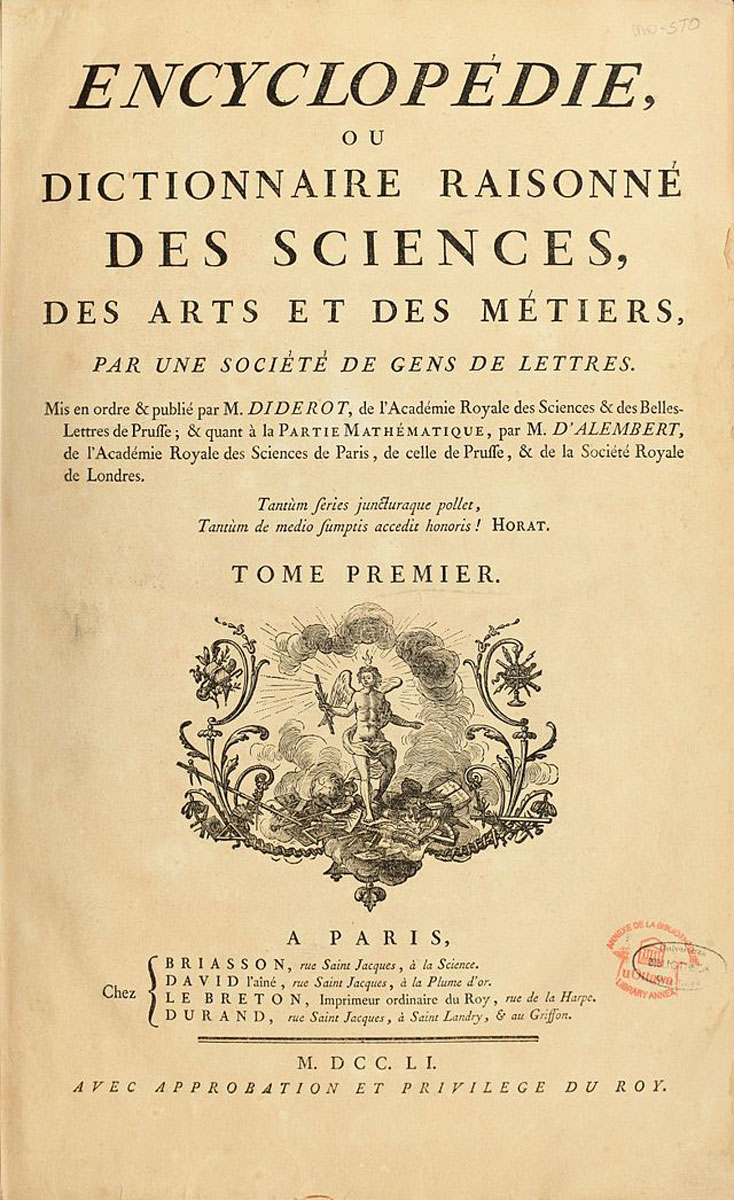
Illustration 9 : Limiting through reason : dictionaries’ boundaries and categories. Source : Fac simile of the first page from the Encyclopédie published by D. Diderot and J. le R. d’Alembert from 1751 to 1772
17.The forms of consensus illuminated by discussions around the links between sciences and the arts raise the question of what had held them back for so long! In a recent interview, the historian Sophie Wahnich linked their critical potential to a political moment, the revolutionary turning point, but also to a stage in the evolution of the sciences and the arts to which we should return in any analysis of hybrid arrangements: “The arts offer the possibility of rediscovering what in the 18th century was called a ‘sensible reason’. [...] The reunion with these sensitive media and the sensitivity to humanity produces the sensitive (that is, committed and revolutionary) man of 1789.” The foundations of the recent combination of arts and sciences can, therefore, be read not as a break-up but rather as a return – as a closing of the parentheses that sought to establish them as autonomous fields in the modern era.
Between sciences and arts, consensual narratives and active constraints
It has become commonplace to trace the dichotomy between theoretical knowledge (science/epistêmê) and practice (arts/technê) back to Aristotle (Nicomachean Ethics, book 6). However, this dichotomy only really came to the foreground during the Renaissance, when the singular figure of the artist emerged (Chastel 2002), followed by the invention of the scientist in the 18th century. The evolution of aesthetic thought was less binary, with Plato already interested in the idea that form can be knowledge (The Republic, book 5) while opening the debate about the finality of acquiring knowledge on the form closed upon itself (Theaetetus). Paradoxically, it was the Encyclopaedia of Diderot and D’Alembert, whose subtitle was Rational Dictionary of Sciences, Arts and Trades, to separate, by classifying, the fields in its title: “The word Encyclopaedia means the linking of the Sciences” (excerpt from his Prospectus, 1851). It was a collective enterprise, aimed at constructing a grid to classify human knowledge in a hierarchical manner, as shown in Figure 2. This old image continues to pose the same type of problems in the digital age. Commenting on how scientific information tools are positioned, Karim Hammou made a statement regarding Calenda, the French site of the dissemination of scientific information, that ideal classification is impossible: “The good ranking is the Holy Grail”.
What we find challenging today is not so much the existence of this schema as its power to mark out cognitive fields that have gradually become impervious to each other. There is indeed something very strange about the realm of science ... for it to be fought over, even at the dawn of the 21st century, on a frontline with low mobility, namely that of disciplinary boundaries. Their hardening is due to the fact that scientists must validate their registration inside both epistemic and institutional perimeters. The map of disciplines established by science studies researchers (Figure 3) is revealing in many ways. Based on the measurement of bibliographic data from thousands of articles over a five-year period, the method makes it possible for fields to emerge that are marked out according to the scientific journals’ disciplinary base and by tracking the localised links in the quotations. It also enables this result to be projected onto a flat surface by utilising techniques used to create world maps, such as the Mercator projection. It is interesting to note that the edges meet from the outside and, consequently, that the notion of centre/periphery is artificially constructed because it is based on the cartographer’s choice of where he cuts the sphere: It is possible that the social sciences are not as marginal as this image implies ... Above all, we see how the collective regime of validating an idea functions within a form of systemic closure. Here is the expression of a form of voluntary servitude, with scientists validating their disciplinary belonging by choosing whom to cite. But it should be noted that the publishers of these publications and the peers who evaluate the articles also have a hand in guiding these choices and contribute to the creation of these scientific continents, some of which, like that of the humanities, operate as quasi-isolates. However, it is clear that explorations in the arts‑/sciences (particularly the social sciences) show how potentially porous these fields might be.
next...
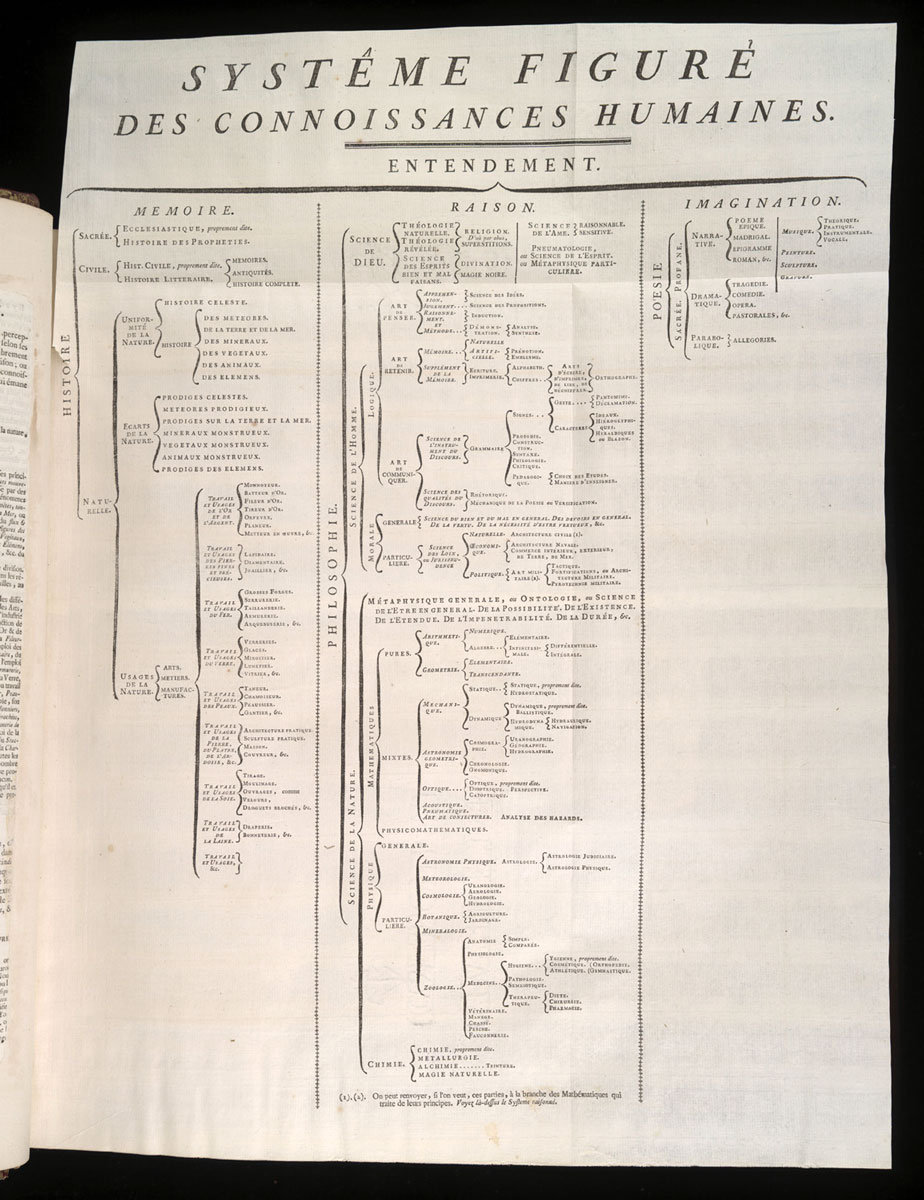
Image 10: Système Figuré des Connoissances Humaines, fac-simile of the unfolding pages of the preface (« Conditions Proposées aux Souscripteurs ») of the Encylopédie ou Dictionnaire Raisonné des Sciences, des Arts et des Métiers (D. Diderot & J. le R. d’Alembert, 1751) http://artflsrv02.uchicago.edu/cgi-bin/extras/diderotimg.pl?0032_pg6a_section3.jpg
18. All the encouragement to engage in inter-, pluri- or trans- practices has been confined to using a prefix without overcoming the term itself: Interdisciplinarity, pluridisciplinarity and transdisciplinarity all have their defenders and detractors. But the reflection is not weighed down by the key term, to which M. Foucault contributed by dismantling the etymological ambiguities that link the constitution of a scientific (“disciplinary”) field to a practice that relates as much to the military as it does to school (“the discipline”) and finds its origin in a tool used to print a truth in the flesh (whip/knout/discipline, carried out by others or by oneself, in a desire for atonement) (Foucault 1975, 1997). There is something very troubling about claiming for oneself a word that so powerfully binds knowledge, rules and the whip in a process that aims to inculcate learning in bodies, a semantic field where teaching crosses paths with both the army and the convent (see Figure 11: The whip as an educational tool)
Nevertheless, we must take the time to detail what these words contain, from the starting point of multidisciplinary juxtaposition, interdisciplinary dialogue and transdisciplinary cross-fertilisation, to better understand the use of other prefixes, especially in the case of practices linking science and the arts. Indeed, those who formulate these proposals are seeking to escape from the disciplinary aporia. According to the critic Brian Holmes, the artist can take up a place removed from the concerns of collectively coded practices and adopt a posture that he calls “extradisciplinary” (Holmes 2007). A closer look at his proposal reveals many forms of ambiguity, as the creative approach seems to escape the codification coming from the schools of art ... but not the scientific worlds: “The extradisciplinary ambition is to carry out rigorous investigations on terrains as far away from art as biotech, urbanism, psychiatry, the electromagnetic spectrum, space travel, etc., to bring forth on those terrains the ‘free play of the faculties’ and the intersubjective experimentation that are characteristic of modern and contemporary art, but also to identify, inside those same domains, the spectacular or instrumental uses of processes or artistic inventions, in order to criticise the original discipline and contribute to its transformation” (Ibid, p. 14). In the end, the proposed step aside seems to be less radical than the term extradisciplinarity suggests.
next...
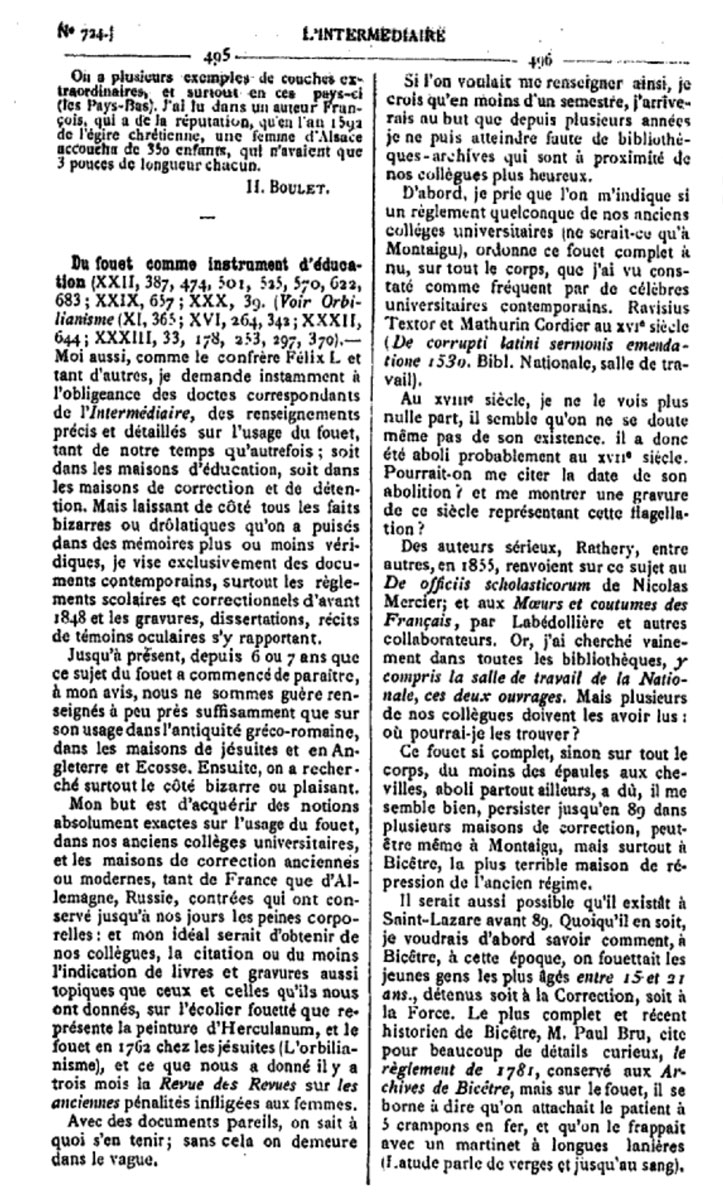
Image 10, below: Illustration 11 : « The whip as an educational tool” (« Du fouet comme instrument d’éducation : la discipline, un terme aux origines contraignantes ») Source : L'Intermédiaire des chercheurs et curieux : questions et réponses, communications diverses à l'usage de tous, littérateurs et gens du monde, artistes, bibliophiles, archéologues, généalogistes, etc.. Vol. 1896/01. Directeurs de publication Read, Charles et Faucou, Lucien, éditeur : B. Duprat (Paris)
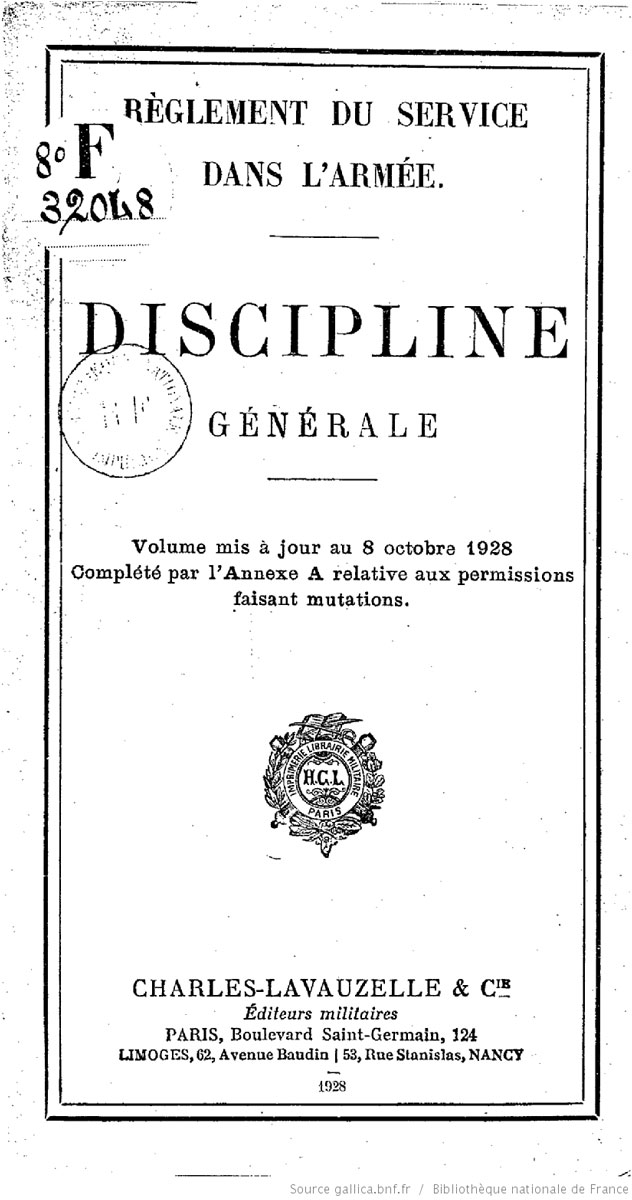
Illustration 12, below: « General discipline. Service rules in the army, 1928 » / « Discipline générale. Règlement du service dans l’armée, 1928 » Source: Charles Lavauzelle publisher (Paris)
19. The notion of “indisciplinarity” might better correspond to the search for a posture that involves complete freedom with respect to the object of the research while opening the questioning on the subjectivity of the seeking subject. This notion is defined by the fact that it is up “to the singular researcher to define his corpus and his methods, and especially the meaning of his research, with the disciplines, against the disciplines, or outside of a discipline” (Loty 2005, p. 258). It is easy to declare that art is precisely the place where indisciplinarity is possible (Huys & Vernant 2012). And yet, recent developments in sciences-/arts partnerships tend to highlight that artistic postures are not, in essence, on the side of an anarchist theory of knowledge (what Feyerabend [1975] put forward in a way that many have forgotten since 1979). Does the friction experiment between arts and sciences not ultimately refer to a form of disillusionment with the promise initially contained in their combination? And what if, in the end, neither art nor science were the spaces of freedom that both points of view were expecting?
next...
b. Ou mieux y retomber ?
20.Driven by talk of openness, risk taking and innovation, the arts-sciences initiatives have very quickly encountered a number of pitfalls, often attributed to their rapid institutional formalisation, which could produce something that standardises, settles and, therefore, traps. When all is said and done, it appears that, while the new terms (arts-/sciences, sciences-/arts) do not solve the aporias in how fields of knowledge are constituted, this is also due to their very low reflexivity, particularly because of the very limited representativeness of the social sciences in these hybrids, as this phenomenon’s recent history suggests. And the emphasis on the technological component in sciences‑/arts mediation is not the only factor that explains this.
Talks of openness, risk taking and innovation
The dynamic of dialectical linkage between sciences and the arts is both recent and well delineated by major institutional moments. Above, I mentioned the founding of the Leonardo journal in 1968 ... In France, the process started in the early 2000s, soon after Claude Allègre asked Jean-Claude Risset for a report (Risset 1998), followed by logarithmic growth and rapid dissemination by the pioneering research centres, such as Fresnoy, established in 1997 around the link between visual arts and technology and described at the time as an “Ircam of the visual arts”. With regard to France, I think in particular of the experiment initiated by the Mediterranean Institute for Advanced Research in Marseille (IMéRA) because it has helped to find a place for social sciences in artistic and scientific partnerships. R. Malina, who arrived in 2007 in Marseille, had previously worked in the United States at the University of Texas at Dallas, but especially at the MIT Press on the publication of Leonardo. Appointed scientific director, along with Samuel Bordreuil, of this institute, he boosted an interdisciplinarity that helped to set a very particular tone within the national network of Institutes of Advanced Studies (IEA), whose generic objective is to host France’s top international researchers. Under their influence, the selection of guests and programmes supported by IMéRA took place in a remarkable opening, combining life sciences, physics and mathematics with social fields, as well as all areas of art, including visual arts, music and live performance. They opened the institute’s residencies to scientists and artists already engaged in, or wishing to join, such partnerships. It is in this intellectual and creative cradle that the antiAtlas of Borders was able to find the conditions for its implementation and its first forms of structuring, as part of a partnership with the Aix-en-Provence School of Art (http://www.ecole-art-aix.fr/) and the Pacte research center (https://www.pacte-grenoble.fr/en).
next...
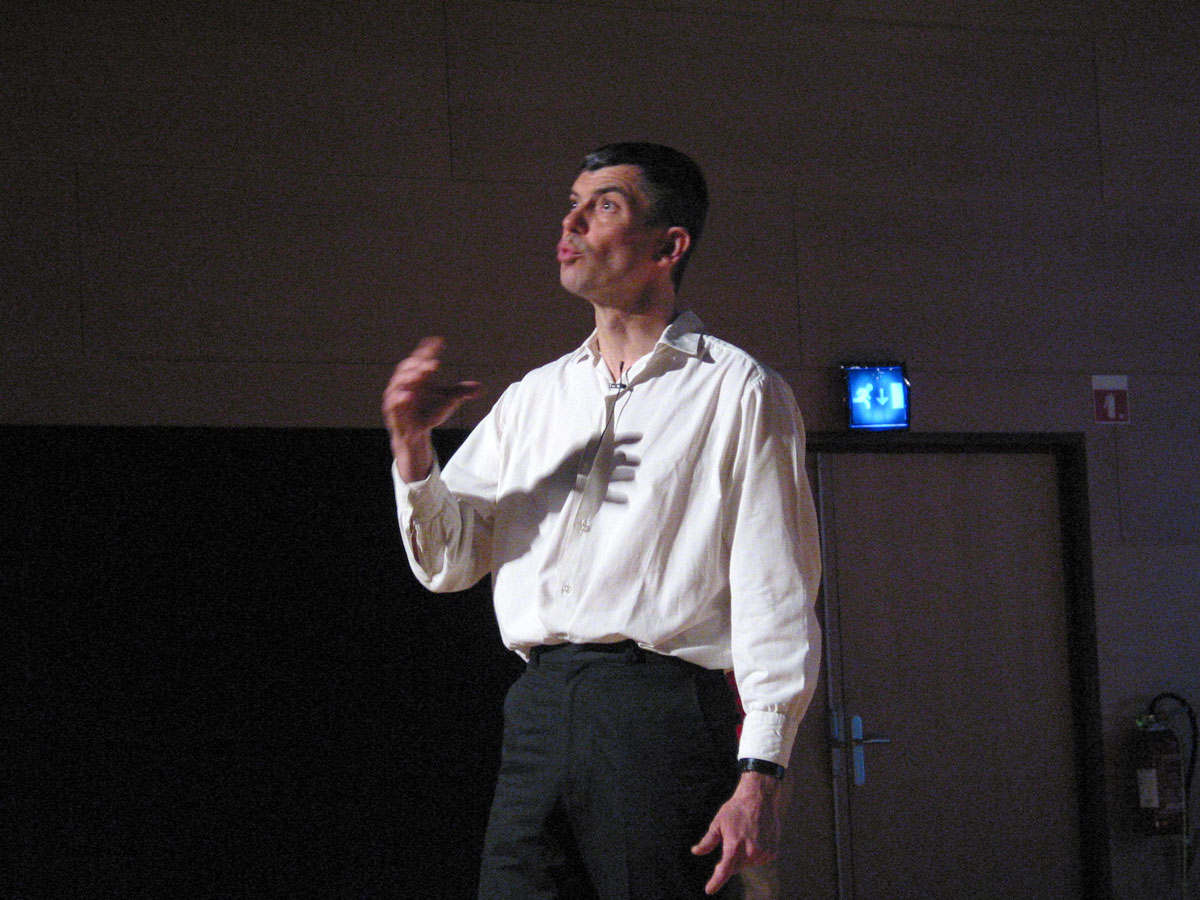
Illustration 13 : « Dominique Rauly, researcher in physics, in 0°K, « performance-show at the crossroads of art andscience » (2003), piece that he co-created with the dancers from the Scalène Company, Youtci Erdos and Manuel Chabanis »
21.In an interesting way, the spread of these partnerships between artists and researchers has gone hand in hand with the transformation of research funding via project-based management on all levels of scientific production (from thematic projects to major “excellence” initiatives, particularly in France, with the promotion of groupings of structures within the Laboratoires d’Excellence, or LABEX). This favourable environment even went so far as to allow the emergence of a LABEX focused on arts-sciences dynamics: Based in Paris, H2H (http://www.labex-arts-h2h.fr) brings together a series of actors from the fields of higher education and research in the visual arts and entertainment to question recent developments in science and technologies in a collective manner. Organised around three keywords, “situations, hybridisations, technologies”, the goal of the initiatives undertaken within it is to both engage in shared reflection on and produce artistic works by using the creative field and artistic epistemics but on objects and themes made by the hard sciences, including human-technology interaction (the transhuman, the digital subject etc.). For example, it includes the Labodanse (labodanse.org/dansesciences/), which is an “interactive research incubator for dance, cognitive neuroscience and new technologies”.
The spread of partnerships between artists and researchers
In this context of competitiveness for access to the resource, inserting an artistic component into the construction of research projects plays a contrasting role in the scientific field. This marginal component can play a role in promoting innovation in the best-endowed sectors – in particular, those of physics and health (see, for example, the Art & Science Meetings on the Origins of Dreams organised in Lyon as part of the LABEX LIO/Institute of Origins in March 2015). In the social sciences and humanities, where budgets are tighter, it is not as easy to take the risk of having such interaction with artists: The fact that it is a priori difficult to describe precisely what the works created will be sometimes leads to the project evaluators criticising their “overly impressionistic and incomplete research protocol[s]” (excerpt from a project evaluation by experts from the French National Research Agency, ANR).
next...
22. Actors in the scientific and cultural fields identify the congruous portion of the social sciences in these hybrids as a structural weakness, to the point of setting up palliative mechanisms on a very modest scale: In 2016, the Fondation Maison des sciences de l’homme (FMSH) in Paris called for support for specific scientific projects in “Art and Social Sciences” and sought “proposals that very directly implement these mergers by linking artists and researchers and/or more precisely show how artistic productions, whatever their nature, broaden the capacities of investigation and analysis of the human and social sciences” (www.fmsh.fr/fr/c/8084).
The congruous portion of the social sciences in these hybrids
This budgetary concern is symmetrical with respect to the players in the arts education field who are being restructured according to models inspired by the schemas of higher education: In Europe, art schools borrow the path of the Bologna Process, which leads them to develop research strategies that never lack an economic component: “Far from being a space of autonomy and freedom, research is subject to economic issues and cultural policies. In addition to the issue of the PhD, which is required more and more often when recruiting professor-artists, the main issue is the granting of budgets” (Delacourt, Schneller et al., 2016, p. 15, citing Baers 2011, Delacourt 2014, Elkins 2014).
The presence of large structuring equipment can help to anchor arts-science dynamics in the long term, beyond the duration of the calls for projects. The experience in Grenoble with Rencontres-i (i for “imaginary”), founded in 2002 as part of a partnership between the CEA (the French Atomic Energy Commission, under the leadership of Michel Ida) and the Hexagone National Theatre (under the direction of Antoine Conjard), offers an artistic mini-season during the autumn that presents a varied programme allowing the general public to witness “arts-sciences” experiments. In a more sustainable way, artist and scientist residencies provide the material that allows various events to take place during Rencontres-i, ranging from theatre or dance pieces presented on the stage of the Hexagone or at the Experimenta lounge, to street theatre and city walks. These years of collaboration have produced interesting co-creations that explore various aesthetic fields, although there has been a strong reluctance with regard to social sciences that might potentially be too critical of the CEA’s research activities in the field of nanoscience technologies and human–machine interactions. The piece 0°K, a “performance-show at the intersection between art and science” that was created in 2003 by physics researcher Dominique Rauly and dancers from the Scalène troupe, Youtci Erdos and Manuel Chabanis, worked remarkably well with the physical properties of the low-temperature material by utilising the body of the dancers, a “diptych of improvisation crossed with what each side had to offer”: “the one side uses the language of the body to mediate their perception of the world, the other seeks a scientific interpretation of the universe in solid and cold bodies that are external to it” (www.cie-scalene.com).
The aim of Rencontres-i was complex: “to unite a core of actors beyond simply the cultural field by bringing together cultural, scientific, economic and social actors around transversal projects; to contribute to the debate on science and society through mediation induced by artistic projects for the general public (which is taking place in all arts-/sciences projects in France and around the world); to bring together the imagination of scientists, artists and citizens; to participate in reflections on innovation by facilitating interactions between artists and researchers; to offer works that question the boundaries between arts and sciences; to innovate in terms of the mode of mediation and the dissemination of knowledge, etc.” This programme responded almost point by point to the arts-sciences report written by Jean-Claude Risset, whose letter of engagement, reproduced in the report, stated that “[t]he arts supply cultural industries with considerable potential market. The progress of science and technology is providing art with new tools, new materials and new paths. Art can also be a driving force behind scientific and technological innovation” (quoted by Martin-Juchat 2012).
next...
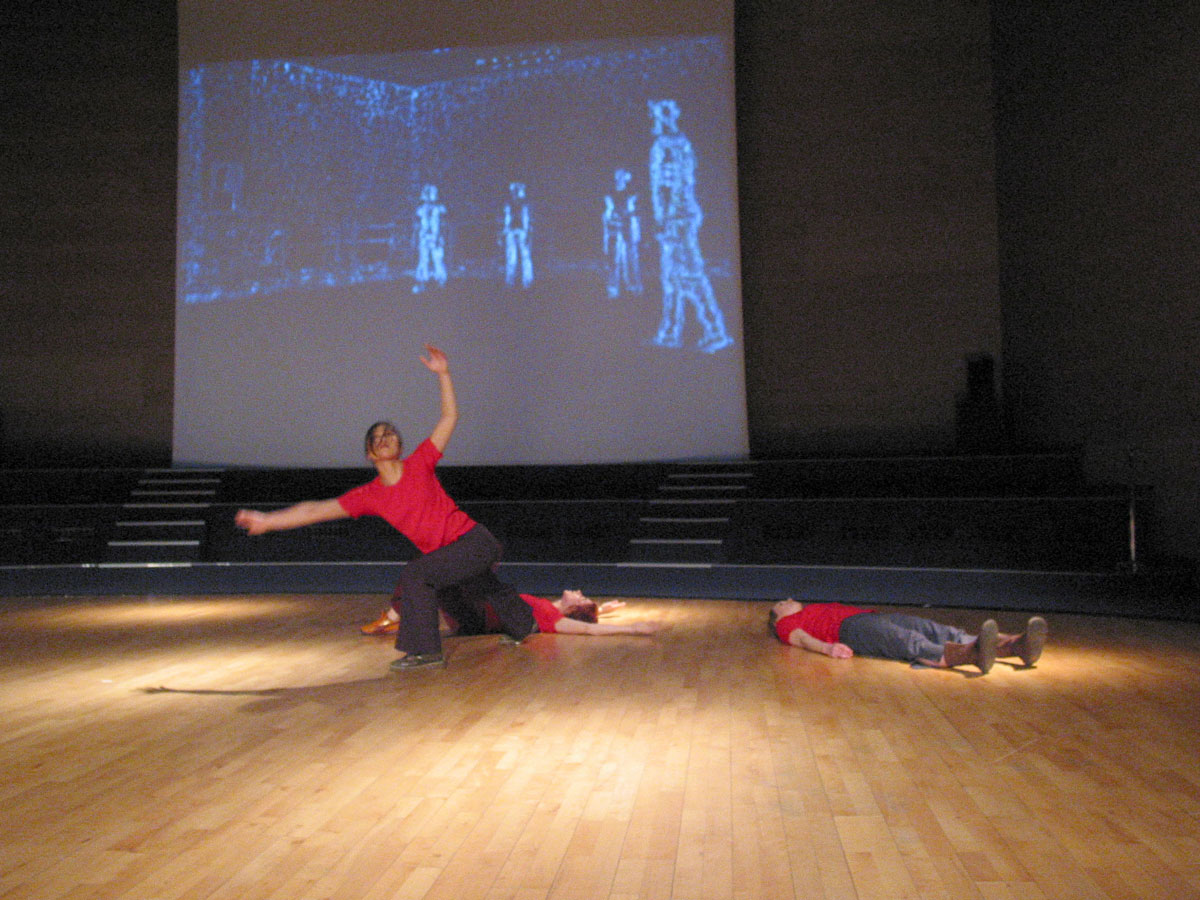
Image 14: Second exerpt from 0°K, « performance-show at the crossroads of art and science » (2003), piece co-created by Dominique Rauly, researcher in physics, with the dancers from the Scalène Company, Youtci Erdos and Manuel Chabanis
23. Encouraging artists and researchers to work together is, therefore, also a response to market logics that not only hang like the sword of Damocles over contemporary creation (Jimenez 2005) but push it towards an artialisation of the world – its aesthetic coating, like in design and fashion (Lipovetsky & Serroy 2013). By coming into contact with artists, researchers can be guided to formulate proposals for industrial application, even if only through the implementation of prototypes. In this way, the Organic Orchestra residency at the Atelier Arts-Sciences de Grenoble in 2014 made it possible to develop an interactive glove that will eventually be taken out of its artistic context and used in the field of the techno-medical industries (Bionic Orchestra project, www.atelier-arts-sciences.eu/EZRA-residency).
Encouraging artists and researchers to work together, also a response to market logics
The platform in Paris Nord, which the Education Ministry labelled “Arts, Sciences, Technologies” in September 2003, had “the objective of fostering innovation (...) by linking research laboratories, training structures and industrial activity, with a particular emphasis on SMEs and SMIs. Its originality lies partly in its area of expertise: It is the only [platform] at the national level to deal with cultural industries” (www.pfast.fr/?Historique-de-la-plate-forme). The requirement of formulating a link between the science‑/arts dynamics and the commercial use, which is more difficult for the social sciences, is far from absent, in France as in the rest of the world (for example, it is one of the official goals of Stuttgart’s Akademie Schloss Solitude to promote mutual economic development, www.akademie-solitude.de/de/programme/art-science-business/).
This commercial aspect, which we sometimes refuse to consider from the researchers’ point of view, has not escaped the attention of marketing professionals, who have fashioned a trademark called ... “ARTS & SCIENCE”. The latter brings together seven international boutiques and offers products ranging from fashion to home, including food. It is a “concept store” based on providing the customer with a “sensory experience” and highlighting the “goal of reviving the pleasure of seeing, touching, hearing and tasting in contemporary culture. After all, these experiences are the essence of human life and the basis for cultivating and discerning the quality of our life tools.” The ironic dimension of this market idea must not lead us to reject the entire arts-science dynamic – a path that many actors from the art worlds have nonetheless already taken in the name of the ideological arguments whose basis I have just pointed out! It seems, however, that the practice of sciences-/art partnerships continues to utilise a true critical dimension ... and it is important to explain here its conditions of possibility.
next...
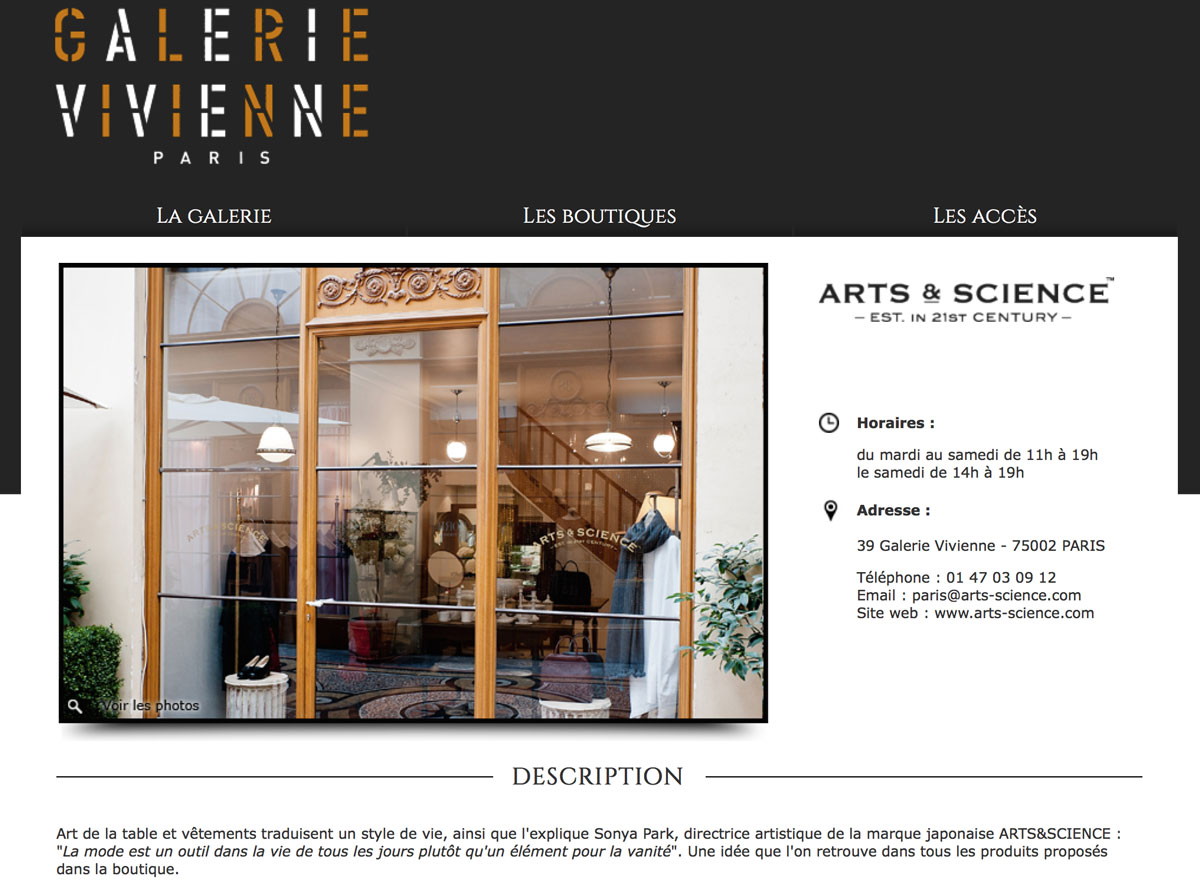
Image 15: The Arts & Science trade name, Galerie Vivienne, Paris. Source: http://www.galerie-vivienne.com/arts-science-r21765.html Accessed on 06.07. 2015
IV. Beyond the true. The critical power of the sciences-/arts hybrids
a. Experience, experiment, experimentation.... A series of misunderstandings have to be dispelled in order to grasp the status of creative research
24. I would like to finish this text by returning to the cognitive and aesthetic – and, therefore, political – processes that are at work in the construction of this dialogue. We need to move past discourses on the value of the sciences-/arts dynamics analysed in the first part and of the material and institutional conditions of their implementation to which the second part of this text is dedicated. To go even further, we must consider the idea that the meeting between arts and sciences takes the form of a particular protocol called experimentation. The meaning of this term, which is being used more and more, is not obvious. Taking root in an epistemology of repetition (the nomos, scientific law, derives its legitimacy from the possible repetition of an experience that determines its objectification), it opens up an exploration of the factual uniqueness (the experience of experimentation must be mined for all its subjectification of fact, which is neither stable nor reproducible). This reversal of the explanation process involves a revaluation of the semantic richness of a related term: experience.
Returning to the cognitive and aesthetic – and, therefore, political – processes
Both practical contact with and observation of facts or events (according to the definition offered by the Oxford English Dictionary), an experiment is defined, in a phenomenological context, as the personalisation of the conditions of the cognition. It makes it possible to highlight the importance of the personalised experience of an idea or a situation in a twofold linguistic transfer, both as verb and as article: to have an experience now includes being able to carry out an experiment (“expérience” in French), especially in a scientific context that goes well beyond the framework of the so-called experimental sciences.
next...
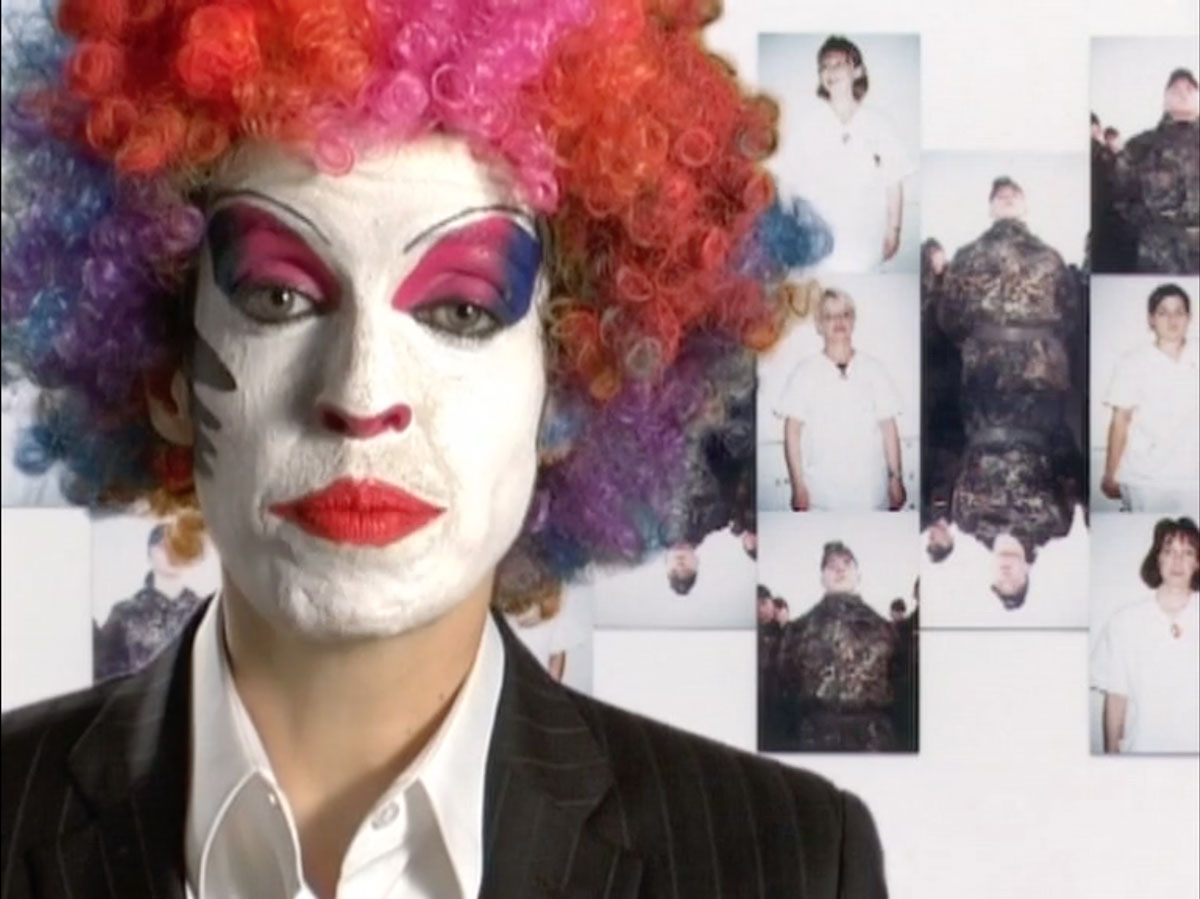
Image 16 : « Subjectivity of the researcher’s language? » Second exerpt from the A Portrait of the Artist as a Worker (rmx.) video, installation by Ina Wudtke presented at the MuHKA in Antwerpen, © 2006 Ina Wudtke
25. Ordinary language has sidestepped the personal dimension of the act of experimenting, whose definition insists that feeling and experiencing are part of the process of acquiring knowledge. The dimension of systematic control that is supposed to establish the positivity of the scientific fact only plays a secondary role in this regard to verify hypotheses. In this context, existence itself can be considered experimental (or at least, all metalanguage about life becomes experimental!). Can we conclude that any social science practice is a kind of experimentation, at least insofar as cognitions resulting from field practice (ethno-, anthropo- and geographies) are “arts-of-doing” (De Certeau 1980 [1990], Buire 2015)? This is essentially what Nato Thompson tells us: The artistic dimension of geography does not need an artist, the geo-grapher, the one who says the world is an essential player in its sensitive making (Thompson 2008), to intervene.
Side-stepping the personal dimension of experimental processes ?
Richard C. Powell and A. Vasudevan show the extent to which we put much of our daily lives to the test. For them, it is such a radical change in our ontology that they describe it as an experimental turn (Powell & Vasudevan 2007). When the experimentation constitutes a game about the modalities of lived experience, can one consider it a mise en abyme of the experience? This is only possible by extending the idea of an experience to include the realm of the senses, the aesthetic relation constituting an essential dimension of existence. “However, experimentation is always necessarily spatio-temporally situated, in the sense that it engages in the transformation of space and time by proposing new possibilities” (Thrift 1996 cited by C. Lehec in her thesis project that resulted from Lehec 2014). This situation, in the geographical sense of “localised in relation to” places the person who works with it in a performativity of this link: It replays the proposal of J. Dewey to shift, in art, from an experience of the work (classical aesthetics) to the work as experience (Dewey, 1934). Derived from dance and body choreography, performance studies happen precisely within the interrogation of these interactions. The artist, like the researcher, places his approach inside this bond or nexus, creating by seeking, seeking while creating.
next...
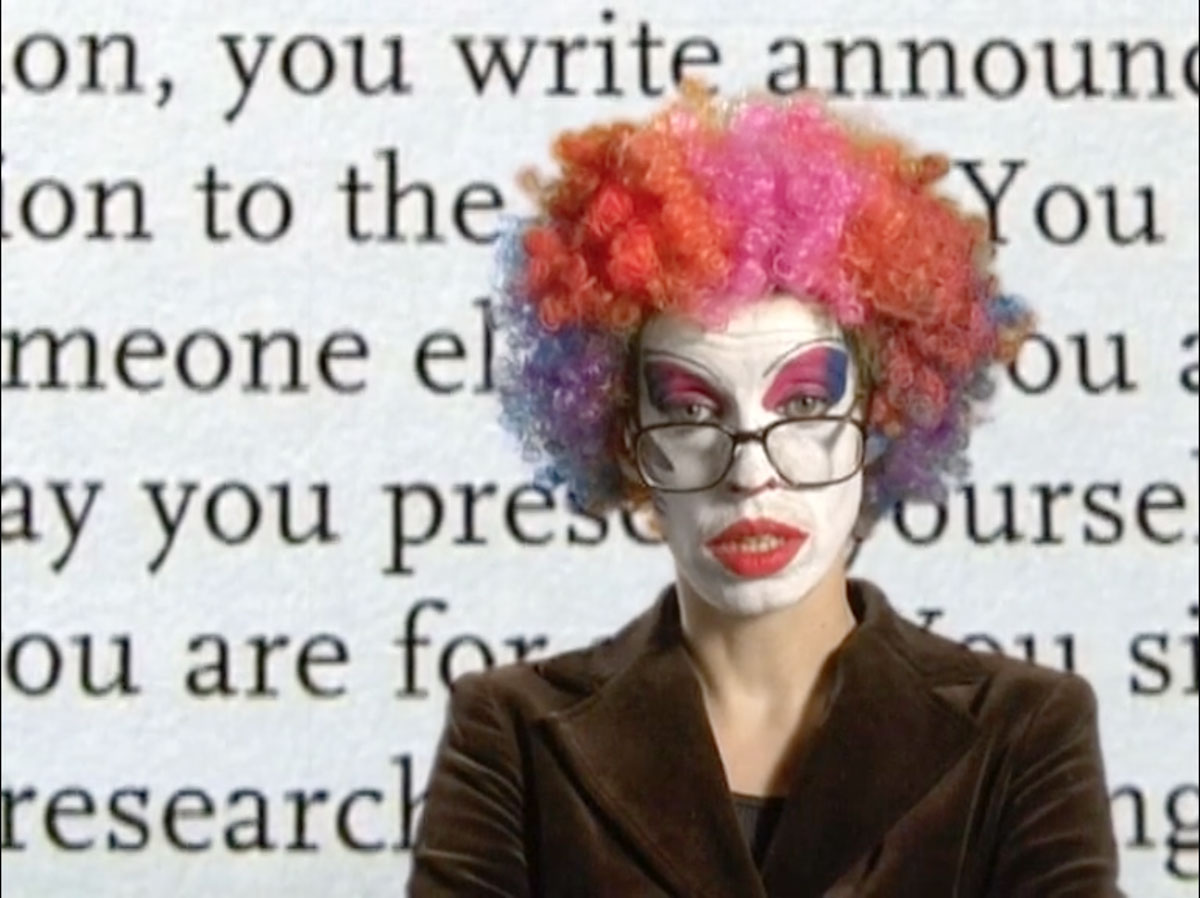
Image 17: « Of textual power in science-/art apparatus » Third exerpt from the A Portrait of the Artist as a Worker (rmx.) video, installation by Ina Wudtke presented at the MuHKA in Antwerpen, 2006 © Ina Wudtke
26. This connection is likely much older than our postmodern glasses want us to believe: Since the beginning of the 20th century, in the plastic arts (Duchamp, the non-Euclidian geometry of Poincarré and the biomorphism of Kandinsky), architecture (Bauhaus) and dance (Margaret H’Doubler and anatomy), artists have taken up questions raised by the scientific and technological advances in their creative process. At the same moment, W. Benjamin was introducing a way of thinking in his essays regarding the sensitive body in motion ... But for a long time, these positions of fertile crossing remained a minority amid a growing uncoupling of aesthetic philosophy from the aesthetic avant-garde.
A connection much older than our postmodern glasses
The Situationist project that proposed drawing in the field – from the source – the inspiration to change life strongly contributed to remobilising the critical potential of such steps based on the reactivation of daily life by explaining its experimentation (Theodoropoulou 2008, Pinder 2009, Ardenne 2009). In this context, there is no need to be an artist in order to transform the world and the view taken of it, nor a researcher to ask questions about what these processes entail. What matters is to attempt to differentiate the experience (and the experiment) from the experimentation; the latter consists in fact in highlighting, if not creating, discontinuity: Before being art or science, this work consists in an iteration that can be described as “research”.
This approach becomes critical when this engagement with everyday life explicitly questions the power games and the dominant order. In order to analyse the way in which contemporary art interacts with the conditions of expression of power relations within space and to forge the notion of experimental geopolitics, Alan Ingram isolates four determining elements to specify this notion of experimentation: the staging, the play, the modulation and the effects (Ingram 2012). It is in the distancing and the mise en abyme that the critical perspective of experimentation is formed. Its issues involve both implementation and restitution mechanisms. The process of creating the idea is as important as the evolution of the medium to translate its mutation. The critical experimenter becomes a researcher for being a creator and a creator for being researcher.
The arts-/sciences hybrids are one modality among many that highlight this profound change in the intertwining of artistic practices and research. Their critical analysis leads to a deconstruction of the categories on which they are based to shift the question of interaction: from art-/science, we move to scienceS-/artS, then to artist-/researcher and researcher-/artist…
next...
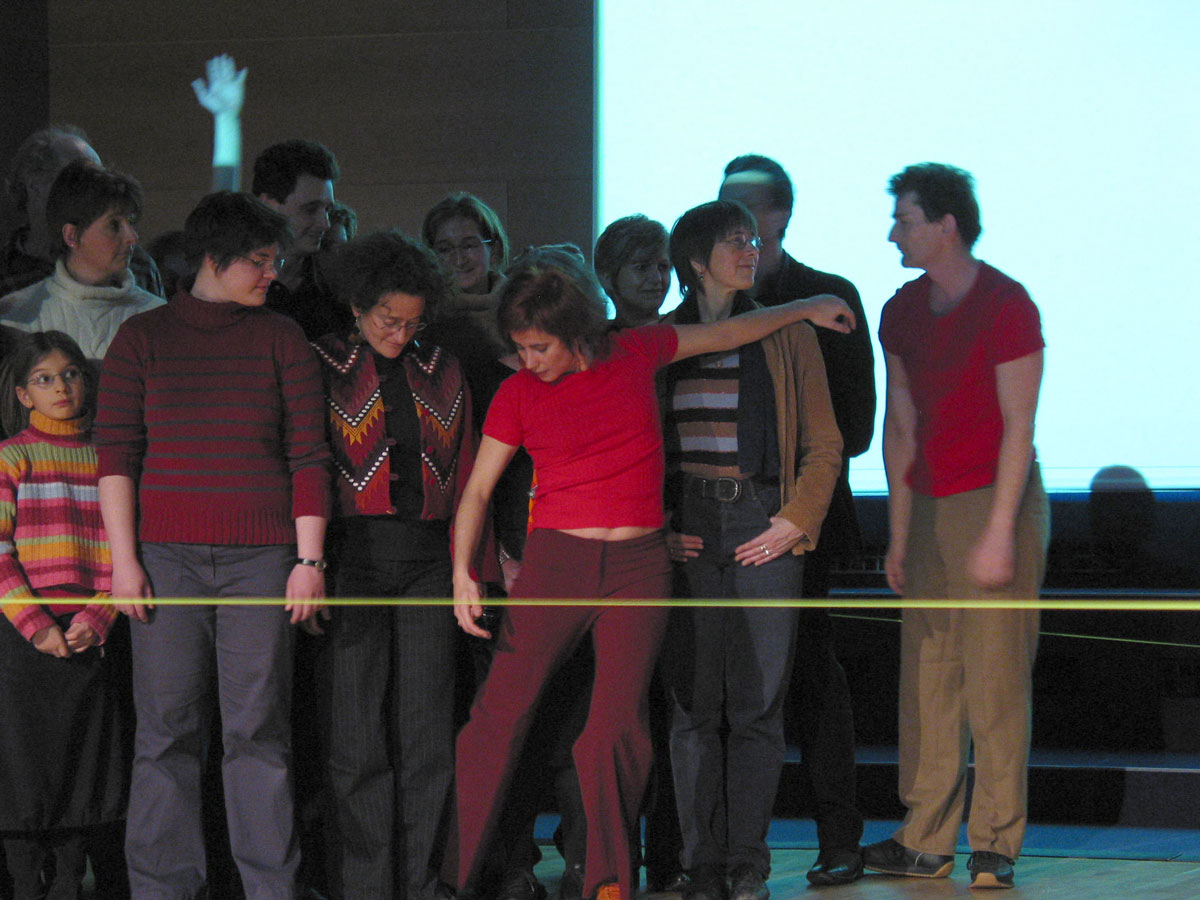
Image 18: « Passing the scene limits » Third extract from 0°K, « performance-show at the crossroads of art and science » (2003), piece co-created by Dominique Rauly, researcher in physics, with the dancers from the Scalène Company, Youtci Erdos and Manuel Chabanis
b. From artist-researcher to researcher-artist
27.What plays out in the proliferation of sciences-/art practices is, therefore, something in the order of a renewal of the status of research, a sort of deaf revolution of practices and productions. To admit that research is creation (because creation is research) leads to a call for the researcher to assume his status as creator, too.
Specifically, before the very recent publication of textbooks on the subject (Wilson, van Ruiten et al., 2013), the practice of creative research was conducted by means of the tools of art, and in particular by putting on display, that is, by constructing a message through a selection of works (Lind 2012, O’Neill & Wilson 2014). In Antwerp, the Museum of Contemporary Art, or MuHKA, was the first to present, in 2006, an exhibition entitled A.C.A.D.E.M.Y.: Learning from Art in order to explore the critical potential of then-emerging arts research. Above all, it was a mise en abyme of the consequences of the Bologna Convention, which, while “incit[ing] the European art schools to demonstrate a pedagogy that stimulates artistic research (...) spread the totally erroneous idea that the result of artistic research must be evaluated according to academic criteria that are identical if not analogous to those that already determine, in a perverse way, the direction of university research”. The following year in Vienna, Dieter Lesage and Ina Wudtke exhibited A Portrait of the Artist as a Researcher (12/7/2007 - 26/8/2007, see Lesage & Busch 2007, Lesage 2009) at the Quartier21 Museum. The quasi-eponymous installation, A Portrait of the Artist as a Worker (rmx.), presented by Ina Wudtke at the MuHKA in Antwerp as part of the 2006 exhibition, features a clown in a library to ridicule the institutional stakes of these practices of bringing the worlds of arts and sciences together. The change of décor, in which the character made up like a clown evolves, includes a library where knowledge appears as decoration of the creativity expressed in the tension of the work.
next...
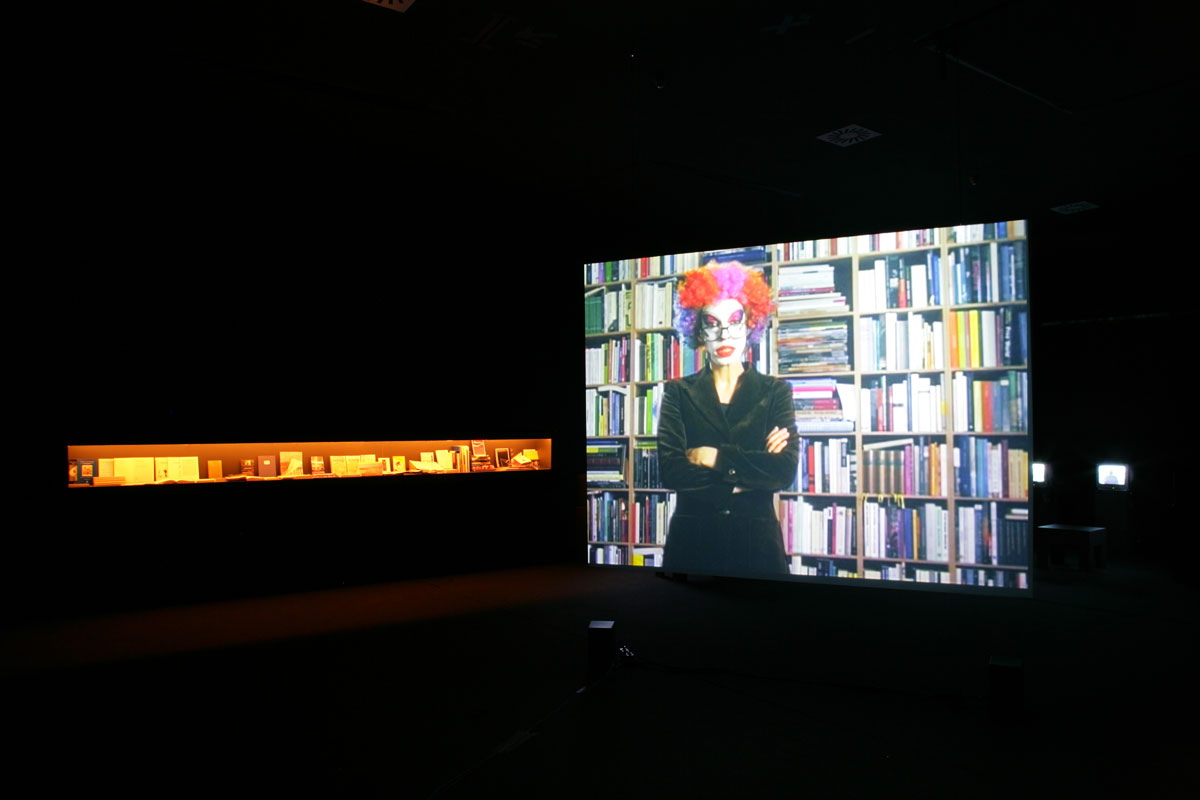
Image 19 : « Multiplying medium : documenting and crossing the mirror » Fourth exerpt of the A Portrait of the Artist as a Worker (rmx.) video, installation by Ina Wudtke presented at the MuHKA in Antwerpen, 2006 © Ina Wudtke
28. Behind the more or less ironic forms of distancing, curating has strongly contributed to highlighting research in art and installing the generic figure of the artist-researcher, as evidenced, for example, by the journey of the A people is missing collective, in which the work of Aliocha Imhoff and Kantuta Quiros consists precisely in holding together the pieces of separate puzzles, visual and sound works of art, performances and installation, translation and publication of texts, exhibitions and colloquia. In a certain way, the work of the antiAtlas of Borders is positioned along to the same lines of a Deleuzian arrangement of curating research ... vaguely echoing the quest for recollection that Aby Warburg unveiled in her Atlas Mnemosyne (The-Warburg-Institute 2013).
More or less ironic forms of distancing
In this intermeshing of art and research, there is certainly a question of doing more than bridging a gap of understanding and sensitivity (see the title of Obrist & Akiko 2002, Bridging the Gap). This can happen through the emergence of ad hoc places, which often take a name that grant them a title, that of laboratory. We think of the pioneering artistic structure, founded in 1985 in Grenoble by two plastic artists, Maryvonne Arnaud and Philippe Mouillon, first called the Urban Sculpture Laboratory, and known today only under the name Laboratory, which with its capital letter has become a proper noun. The Laboratoires d’Aubervilliers propose to play this role of promoting artistic practices that originate in the field, conceived no longer as the manufacturing of works but as a process of sharing experiences, which leads to a consideration of, for example, the classroom as a work of art. These situation laboratories turn the meeting place into a critical spring. As far as the antiAtlas of Borders is concerned, the digital dimension complements the sciences-/arts and technology relationship, which develops in a “multidimensional meeting space” joining events (exhibitions, seminars and symposiums, as well as a gallery and discussions online) together. Thus, using code and the relationships made possible by computer techniques radically transforms the conditions of these science-/arts combinations (Fourmentraux 2014).
next...
29. Art magazines do not attach particular importance to sciences-/arts events, which bespeaks, at least for now, an ambiguous acceptance of the status of the productions resulting from these partnerships: On the arts news site of the electronic magazine e‑flux.com, searching for “art-science” yields fewer than 10 results; you have to type “art + science” to see a few more headlines corresponding to the concerns developed in this text. The Performance Studies international (or PSi) network, an innovative initiative founded in 1997 “to promote communication and exchange among artists, thinkers, activists, and academics working in the field of performance” (http://www.psi-web.org/), only started publishing a journal, Global Performance Studies, in 2015. The field’s very rapid evolution has led the promoters of this type of collaboration to initiate new forms and to expand the forms, for example by publishing the Journal of Artistic Research online, whose purpose is to present not articles but exhibitions, in large part the result of artistic incursions into scientific grounds, in most cases from a thematic rather than a methodological point of view. Scientific publications are now offering space to research in this direction with, for example, the creation in 2015 of a new title at the intersection between letters and arts on the one hand and geographical sciences on the other hand: GeoHumanities, published by Taylor & Francis, devotes half of its pages to reflections on curatorial practices but remains essentially a textual medium that respects international scientific editorial standards. As such, the journal in which this text appears seems be positioned in a brand-new spot because of its double aesthetic choice – on the one hand, that of producing articles engaged in the subjectivity of a digital artist, and on the other hand that of engaging in a disciplinary crossover on the subject of borders. It fits well within a broader reflection on an openness towards what it means “to do the work”.
Little presence of sciences-/arts events in art magazines
Since Marcel Duchamp, it has been accepted that a work of art is neither uniquely the work of an artist nor is it even a material product. But can any human enterprise be considered artistic? At the end of this text, without entering an overly theoretical discussion of the limits of art, it is important to return to the shifts in points of view that the questioning of the binarity posited at the beginning of the discussion touches on: “One cannot identify the relationship between arts and the humanities with the relationship between researchers and artists. The artist cannot be considered the sole custodian of sensitivity or creative practices, nor the researcher of scientific methods and conceptual tools” (Kreplak, Tangy et al., 2011). This means that if we accept the existence of artistic research (Caduff, Siegenthaler et al., 2010), it first has to be specified from the point of view of the status of the creation: “an artist who behaves as such at the university is not from the outset a researcher-creator. As a researcher-creator, he is qualified less by his sole status as a member of an institution than by a research approach that is made concrete in two ways: a production of a scientific nature and a production of an artistic nature” (Stévance 2012). Lastly, this requires us to settle the status of the researcher engaged in artistic inquiry and practice: Is he doomed to remaining a mediator, or can he access the undefined status of being an artist (Chateau 2000)? How can it be recognised that research has a specific part to play in artistic practices?
next...
30. The challenge for the researcher in the social sciences is multifaceted: It can be a concern for restitution (to engage in new forms of presenting his research) in a world where the status of the written word is shifting towards valuing media that use images and new technologies. By providing artists with material that they will use to create, the researcher is part of a rather traditional idea of “an aesthetic of reception” (Genette 1997, p. 11). Conversely, from the moment when artists and researchers walk together in mutual recognition of their contributions (the finesse of evolving concepts that the researchers contribute, the diversification of forms brought by the artists), the conditions of creation shift, just like those of the constitution of unpublished artistic epistemes.
Multifaceted challenges for the researcher in the social sciences
What is new is that thought is grasped along the way: The process of developing the concept is now worth as much as its final formulation. The researcher is therefore compelled to find ways to account for the dynamic aspect of knowledge manufacturing, which ranges from formulating the problem to explaining the results. His social responsibility increases greatly because he is no longer only asked to produce conclusions that can be validated by his peers (through scientific publications subject to the brutal condition of a double-blind peer review) but also has to produce works that will be accessible to the greatest number of people.
next...
V. Conclusion
31. For the researcher, going down this path obviously requires taking on some creativity that, until now, has been little unexplored. This can have two objectives, one purely related to exercising his original profession, which means having a better methodological apparatus to push science forward, and the other not originally located in the academic sphere but in the – potentially critical – interface with the recipients of his intellectual production, causing him to question the impact of scientific production in society and its political sense.
Going down this path
Researchers almost certainly harbour a great many illusions regarding artists’ ability to reach more diverse audiences, given how the worlds of art (Becker 1988) are often more socially exclusive than people from the academic worlds might imagine. In a way that is both modest and ambitious, the researcher-artist has to attempt to reinvent the language with which he is building and conveying his thinking. In this context, it doesn’t matter whether the researcher himself takes the brush or the camera or builds a creative protocol with artists in collaboration with the people studied ... who may, in turn, be granted the status of artist. What then becomes essential in such a collaboration (co-signature) is that the contributions of one or the other not be essentialised: Just because their intentions can be joined does not mean that researchers and artists become completely identical to each another.
These partnerships all go well beyond borrowing vocabulary from each other and from the apparatuses of science and art – terms whose function is primarily institutional. They must go beyond the desire to make a symbolic profit from one field’s use of the other in terms of prestige and authority (of both art and science), insofar as each person embodies a form of innovation ... this evaluation criterion is essential to the art markets and the scientific market!
next...
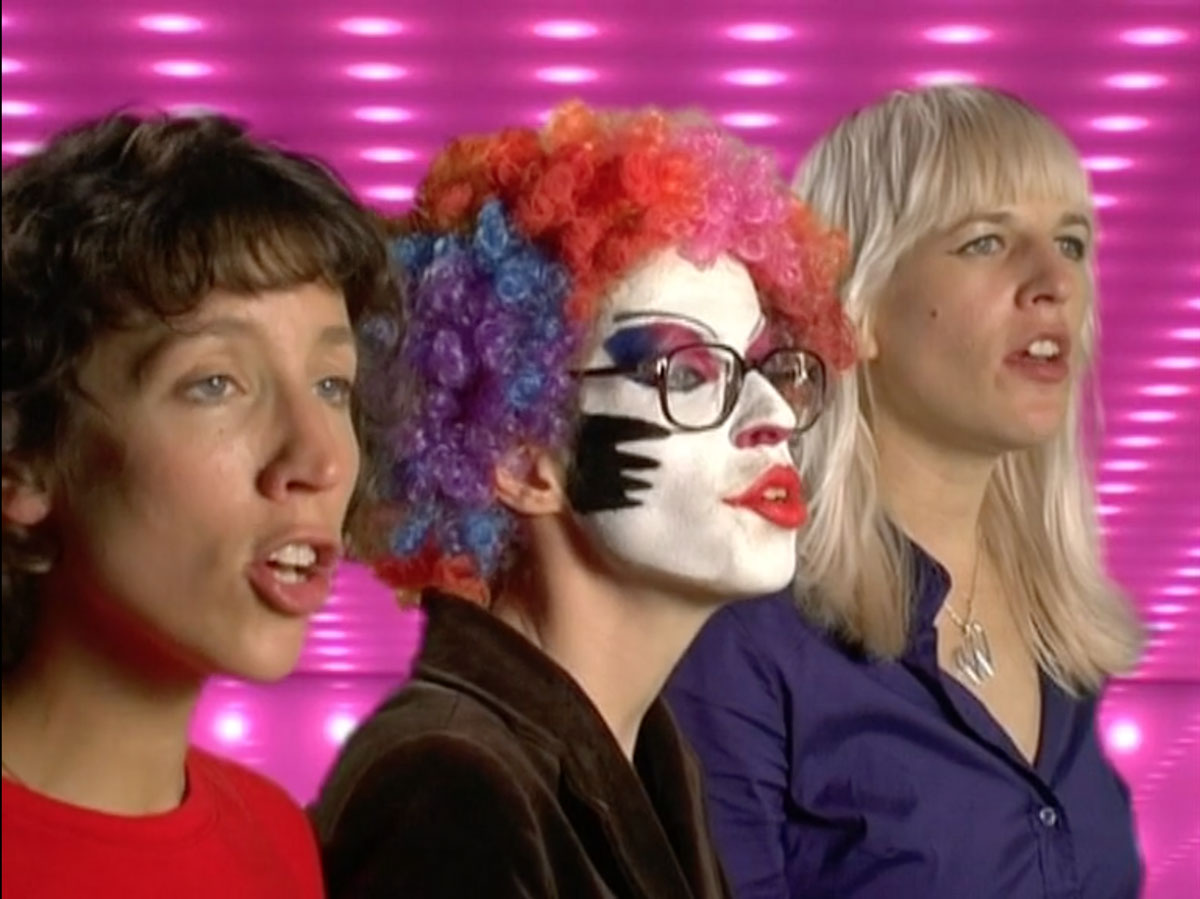
Image 20: What status for pluri-vocality within social sciences-/art apparatus ? Fifth exerpt of the A Portrait of the Artist as a Worker (rmx.) video, installation by Ina Wudtke presented at the MuHKA in Antwerpen, 2006 © Ina Wudtke
32.Fighting the disciplinary compartmentalisation and promoting an “aesthetic” point of view based on the relationship between the work and the spectator-receiver helps to weaken the strength of speech that validates results “after the fact” in favour of valourising approaches, processes, explorations and situations inside a context. The question of the relationship between science and the arts takes on all its meaning in this renewal of the status of experimentation and exploratory practices.
Fighting the disciplinary compartmentalisation and promoting an “aesthetic” point of view
As emphasised above, the specificity of social sciences/-arts experiments lies in their ability to deconstruct naïve visions that essentialise these two categories of art and science by having the one be instrumentalised by the other. The purpose of carrying out experiments in the dialogue between these fields should not be to make scientific results beautiful or acceptable, nor to innovate in societal or even commercial practices. The relationship that develops in these long-term partnerships is such that it potentially involves the renewal of the knowledge production chain and takes it far beyond the boundaries of the laboratory. By involving everyone at once, both the people surveyed and those who are shown the results, in a form of horizontality of the production of works that are informative, this interaction is never politically neutral – quite the contrary. It is in a renewed scientific pact that the stakes of the sciences-/arts experiments can be found.
next...
VI. Bibliography
Ambrožič, M., Vettese, A., (dir.), 2013, Art as a Thinking Process. Visual Forms of Knowledge Production, Berlin/ Venezia, Sternberg Press/ Università Iuav di Venezia.
Ardenne, P., 2009, Un art contextuel : Création artistique en milieu urbain, en situation, d'intervention, de participation, Paris, Flammarion, 254 p.
Baers, M., 2011, « Inside the Box: Notes From Within the European Artistic Research Debate », e-flux journal [online], 26/06/2011, http://e-flux.com/journal/inside-the-box-notes-from-within-the- european-artistic-research-debate/.
Baker, N., 2016, « L'atome en images », CNRS. Le Journal / Les yeux de la Science, https://lejournal.cnrs.fr/nos-blogs/les-yeux-de-la-science/latome-en-images consulté le 25/3/2016.
Baqué, D., 2004, Pour un nouvel art politique. De l'art contemporain au documentaire, Paris, Flammarion, 318 p.
Baumgarten, Alexander Gottlieb, 1988 [1750], Esthétique, éd. et trad. fr. Jean-Yves Pranchère, Paris, L'Herne.
Becker, H. S., 1988, Les mondes de l’art, Paris, Flammarion, 382 p.
Berg, B., Bellows, A., Mc Dougall, M., 2000, Science Is Fiction: the Films of Jean Painlevé, Cambridge, MIT Press.
Blanc, N., 2008, « Éthique et esthétique de l’environnement », EspacesTemps.net (Travaux, 31/01/2008), http://www.espacestemps.net/articles/Ethique-et-esthetique-de-environnement/ consulté le 20/10/2009.
Börner, K., Klavans, R., Patek, M., Zoss, A. M., Biberstine, J. R., Light, R. P., Lariviere V. et Boyack, K. W., 2012, « Design and update of a classification system: The UCSD map of science », PLoS ONE 7 (7), http://cns.iu.edu/images/pres/2012-borner-ucsdmap-netsci.pdf.
Boucheron, P., 2011, « On nomme littérature la fragilité de l'histoire », Le Débat 165 (2011/3), p. 41-56.
Bourdieu, Pierre, 1986, « Le champ scientifique », Actes de la recherche en sciences sociales 1976 (2), p. 88-104.
Bredekamp, H., 2010, La main « pensante ». L’image dans les sciences, Penser l’image, E. Alloa, Dijon, Les Presses du réel.
Buire, C., 2015, « Les arts-de-faire du terrain », Annales de géographie 687-688 (2012/5), p. 600-620.
Caduff, C., Siegenthaler, F., Wälchli, T., (dir.), 2010, Art and Artistic Research, Zürich, Scheidegger & Spiess.
Canguilhem, G., 2009 [1977], Idéologie et rationalité dans l'histoire des sciences de la vie, Paris, Vrin.
Chastel, A., 2002, L'artiste. L'Homme de la Renaissance, E. Garin, Paris, Seuil.
Chateau, D., 2000, Qu'est-ce qu'un artiste ?, Rennes, Presses Universitaires de Rennes.
Chateau, D., 2010, « Quelques réflexions sur l’épistémè de l’esthétique », Revue Proteus – cahiers des théories de l'art (0), p. 59-64, http://www.revue-proteus.com/articles/Proteus00-9.pdf.
Clair, J., 2002, L’âme au corps : arts et sciences, 1793-1993 : [exposition, Paris], Galeries nationales du Grand Palais, 19 octobre 1993-24 janvier 1994 : catalogue, Paris, Réunion des musées nationaux.
Compagnon, A., 2011, « Histoire et littérature, symptôme de la crise des disciplines », Le Débat 165 (2011/3), p. 62-70.
Cousin, V., 1853, Du Vrai, du Beau, du Bien, Paris, Didierp.
De Certeau, M., 1980 [1990], L'invention du quotidien. 1, arts de faire. 2, habiter, cuisiner. Paris, Folio Essais, 345 + 416 p.
Delacourt, S., 2014, « Passe d’abord ton doctorat ! De l’alignement de la recherche artistique sur le modèle universitaire », l’art même 62 (2e trimestre), p. 3-6.
Delacourt, S., Schneller K., Theodoropoulou, V., (dir.), 2016, Le chercheur et ses doubles, Paris, B42.
Dewey, J., 1980 [1934], Art As Experience, New York, Perigee Books.
Elkins, J., 2014, « Introduction », Artists with PhDs., J. Elkins, Washington D. C., New Academia.
Feyerabend, P., 1979 [1975], Contre la méthode. Esquisse d’une théorie anarchiste de la connaissance, traduit par B. Jurdant et A. Schlumberger, Paris, Seuil.
Filippone, C., 2015, Au carrefour des arts et de la recherche en sciences sociales humaines et sociales, Master 2 Pro, Lyon 2.
Foucault, M., 1988, Les mots et les choses. Une archéologie des sciences humaines, Paris, Gallimard.
Foucault, M., 1997, Il faut défendre la société, cours au Collège de France 1975-76, Paris, Gallimard-Seuil, 272 p.
Fourmentraux, J.-P., 2008a, « Art et hacktivisme : l'alternative Internet », Critique 733-734 (2008/6), p. 554-564.
Fourmentraux, J.-P., 2008b, « Œuvres en partage. La création collective à l’ère d’Internet », Connexions 90 (2), p. 179-191, http://www.cairn.info/revue-connexions-2008-2.htm.
Fourmentraux, J.-P., 2014, « Art, science, technologie? Création numérique et politiques de l’interdisciplinarité », Volume ! 10 (2/2014 "Composer avec le monde"), p. 113-129, https://volume.revues.org/3999.
Garbolino, P., 2013, « What the scientist’s eye tells the artist’s brain », Art as a Thinking Process. Visual Forms of Knowledge Production, Ambrožič, Mara & A. Vettese. Berlin/ Venezia, Sternberg Press/ Università Iuav di Venezia, p. 74-87.
Gaston Granger, G., 1968, Essai d'une philosophie du style, Paris, Armand Colin.
Geimer, P., 2002, Ordnungen der Sichtbarkeit. Fotografie in Wissenschaft, Technologie und Kunst. Frankfurt am Main, Suhrkamp.
Genette, G. r., 1997, L’Œuvre de l’art II, La Relation esthétique. Paris, Seuil, 304 p.
Gross, A., 2006, Starring the Text: The Place of Rhetoric in Science Studies. Carbondale, IL, Southern Illinois University Press.
Hall, S., 1997, « The work of representation », Representation: Cultural representations and Signifying Practises, S. Hall. London, Sage, p. 13-74.
Hallyn, F., 1987, La Structure poétique du monde : Copernic, Kepler, Paris, Seuil.
Heinich, N., 2005, L’élite artiste. Excellence et singularité en régime démocratique, Paris, Gallimard, 370 p.
Holmes, B., 2007, « L’extra-disciplinaire. Pour une nouvelle critique institutionnelle », Multitudes 17 (1), p. 11-17.
Holmes, B., 2009, Escape the Overcode: Activist Art in the Control Society, Eindhoven/ Zagreb, Van Abbesmuseum / WHW, 417 p.
Holton, G., 1998 [1973], Thematic Origins of Scientific Thought. Kepler to Einstein. Cambridge, MA, Harvard University Press.
Huys, V., Vernant, D., 2012, L'indisciplinaire de l'Art, Paris, PUF.
Ingram, A., 2012, « Experimental geopolitics: Wafaa Bilal's Domestic tension », The Geographical Journal 178 (2), p. 123-133, http://dx.doi.org/10.1111/j.1475-4959.2011.00455.x.
Jimenez, M., 2005, La querelle de l’art contemporain, Paris, Gallimard, 402 p.
Klavans, R., Boyack K. W., 2007, « Maps of Science: Forecasting Large Trends in Science », (Courtesy of Richard Klavans, SciTech Strategies, Inc), Places & Spaces: Mapping Science. 3rd Iteration (2007): The Power of Forecasts, Börner K. et Davis J. M., http://scimaps.org.
Kreplak, Y., Tangy, L., Turquier, B., 2011, « Introduction. Art contemporain et sciences humaines : création, médiation, exposition », Tracés. Revue de Sciences humaines [En ligne] (11), http://traces.revues.org/5239 consulté le 10 janvier 2016.
Kuhn, T., 1977, The Essential Tension: Selected Studies in Scientific Traditionand Change, Chicago, University of Chicago Press.
Latour, B., 1989 [1987], La science en action. Introduction à la sociologie des sciences, Paris, La Découverte.
Latour, B., 2010, « Pour une École des arts politiques : Manifeste compositionniste », Conférences - débats – rencontres, Paris, Centre Pompidou, https://www.centrepompidou.fr/cpv/resource/cGbMqgL/rj9yr6.
Latour, B., 2011, « Il n'y a pas de monde commun : il faut le composer », Multitudes 45 (2011/2), p. 38-41.
Lehec, C., 2014, Fabriquer du paysage. Une expérimentation artistique et géographique autour du mur de séparation à Jérusalem et Bethléem, Master, Lyon 2.
Lesage, D., 2009, « Who’s Afraid of Artistic Research? On measuring artistic research output », Art & Research: A Journal of Ideas, Contexts and Methods 2 (2), http://www.artandresearch.org.uk/v2n2/lesage.html.
Lesage, D., Busch, K., (dir.), 2007, A Portrait of the Artist as a Researcher. The Academy and the Bologna Process, Antwerp, MuHKA.
Lind, M., (dir.), 2012, Performing the Curatorial Within and Beyond Art, Berlin, Sternberg Press.
Lipovetsky, G., Serroy, J., 2013, L’esthétisation du Monde. Vivre à l’âge du capitalisme artiste, Paris, Gallimard.
Loty, L., 2005, « Pour l’indisciplinarité », The Interdisciplinary Century; Tensions and convergences in 18th-century Art, History and Literature, J. Douthwaite et M. Vidal. Oxford, Voltaire Foundation, p. 245-259.
Martin-Juchat, F., 2012, « Mettre en scène la coopération entre arts et sciences », Culture & Musées (19), p. 43-66.
Mouffe, C., 2007, « Artistic Activism and Agonistic Spaces », Art & Research: A Journal of Ideas, Contexts and Methods 1 1 (2. Summer 2007), http://www.artandresearch.org.uk/v1n2/mouffe.html.
O’Neill, P., Wilson, M., (dir.), 2014, Curating Research, Londres, Open Editions.
Obrist, H.-U., Akiko, M., (dir.), 2002, Bridge the Gap?, Cologne, Center for Contemporary Art Kitakyushu and Verlag der Buchhandlung Walther König.
Piaget, J., 1972, Epistémologie des sciences de l'homme, Paris, Gallimard.
Pinder, D., 2009, « Situationism/Situationist Geography », Elsevier Science & Technology Books, p. 144-150.
Powell, R. C., Vasudevan, A., 2007, « Geographies of experiment », Environment and Planning A 39, p. 1790-1793.
Pratt, G., Johnston, C., 2013, « Staging Testimony In Nanay », Geographical Review 103 (2), p. 288-303.
Regnauld, H., Lefort, I., 2015, « L'image et la géographie : la progressive élaboration d'un nouveau régime épistémique. Introduction », L'Information géographique 79 (4), p. 8-12.
Risset, J.-C., 1998, Rapport Art-Science-Technologie, Paris, Ministère de l'enseignement supérieur : 273. http://www.education.gouv.fr/cid1905/art-science-technologie-a.s.t.html
http://media.education.gouv.fr/file/95/6/5956.pdf.
Ronell, A., 2003, « The experimental disposition: Nietzsche's discovery of America (or why the present administration sees everything in the form of a test) », American Literary History 15 (3), p. 560-574.
Stengers, I., Schlanger, J., 1991 [1988], Les concepts scientifiques. Invention et pouvoir, Paris, Gallimard / Folio Essais.
Stévance, S., 2012, « À la recherche de la recherche-création : la création d’une interdiscipline universitaire », Intersections: Canadian Journal of Music / Intersections, revue canadienne de musique 33 (1), p. 3-9.
The-Warburg-Institute, 2013, « Mnemosyne: Meanderings Through Aby Warburg’s Atlas », http://warburg.library.cornell.edu.
Theodoropoulou, E., 2008, L' "Internationale situationniste" : un projet d'art total, Ph. D, Paris 1.
Thompson, N., 2008, In two directions: Geography as art, Art as Geography, New York, Melville House Publishing / ICI (Independent Curators International), p. 13-26.
Thrift, N., 1996, Spatial formations, Londres, Sage.
Thrift, N., 2008, Non-Representational Theory. Space, politics, affect, Londres / New York, Routledge.
Wesseling, J., (dir.), 2011, See It Again, Say It Again. The Artist as Researcher, Antennae Series n° 6, Amsterdam, Valiz.
Wilson, M., van Ruiten S., SHARE, (dir.), 2013, Handbook for Artistic Research Education, Amsterdam, ELIA, http://www.elia-artschools.org/images/products/120/share-handbook-for-artistic-research-education-high-definition.pdf consulted on March 25th, 2016.
VII. Notes
1. Koek, Ariane, 2014, French edition of Pour la Science, https://www.pourlascience.fr/sd/physique/collisions-creatrices-8138.php , quoted by Catherine Filippone, 2015.
2. Introduction à l’étude de la médecine expérimentale, 1856, quoted in J. Schlanger, 1991 [1988].
3. Without considering, in a reductive way, that the exact sciences are interested in art only for the purpose of communication.
4. The full quotation is worth reproducing here: “Whatever term ‘aesthetic’ may mean, the artist’s goal is the production of aesthetic objects; technical puzzles are what he must resolve in order to produce such objects. For the scientist, on the other hand, the solved technical puzzle is the goal, and the aesthetic is a tool for its attainment. Whether in the realm of products or of activities, what are ends for the artist are means for the scientist, and vice versa.”
5. See the contests organised by the Nanoarts foundation to find the most beautiful images created during research into nanotechnologies: http://www.fondation-nanosciences.fr/spip.php?article73.
6. www.theatre-du-soleil.fr/thsol/entre-nous/pensees-du-jour/la-culture-et-la-foule, 1271
7. A category created by France’s state-sponsored “Investissements d’avenir” at the beginning of the 21st century.
8. In France, author and director Marcel Bozonnet and his company, the Comédiens Voyageurs, have been able to work from the texts of two historians – Sophie Wahnich, whose work is intertwined with extracts of Victor Hugo, Mirabeau, Aimé Césaire and Robespierre in the work Soulèvement(s), brought to the stage in 2015 at the Maison des Métallos in Paris, and Gérard Noiriel – in a theatre collaboration, Chocolat, Clown Nègre (2012), that was so successful it led to a mainstream film being made by Roschdy Zem, released in 2016 and starring Omar Sy in the lead.
9. “La Révolution n’est pas un mythe, c’est une histoire vécue. Entretien avec Sonya Faure et Anastasia Vécrin”, Libération, 22 October 2015, http://www.liberation.fr/debats/2015/10/22/sophie-wahnich-la-revolution-n-est-pas-un-mythe-c-est-une-histoire-vecue_1408142
10. Words attributed to a member of the editorial council in October 2006, as quoted by Karim Hammou on his blog on 12 July 2010, http://leo.hypotheses.org/4689, “Calenda et les disciplines scientifiques”.
11. For France, see note 7. This type of initiative is found at all levels of university governance and in many countries: For example, the University of Colorado at Boulder has developed the Arts and Sciences Fund for Excellence (ASFE), whose goal is “to assist A&S faculty members in their own teaching excellence and research/creative work endeavors. Funding for DFE comes entirely from annual gifts made to the College by friends and alums” (Arts & Sciences Fund for Excellence AY 2014-2015), http://english.colorado.edu/arts-sciences-fund-for-excellence-ay-2014-2015/
13. Interview with Antoine Conjard and Michel Ida in Qualitique, no. 212, December 2009: pp. 6–10, quoted by Martin Juchat 2012.
14. “The six A&S shops, each devoted to a specific area of the collection, are strongly rooted in sensory experience and aim to reanimate the pleasure of seeing, touching, smelling, hearing, and tasting in contemporary culture. These experiences are, after all, the essence of human life and the basis for cultivating and discerning quality in our tools for living.” Website: www.arts-science.com, accessed on 20 November 2016. e-mail: paris@arts-science.com
15. “The experimental apparatus seeks to control the variables and to modify them one at a time thanks to its indicator. When the construction of an experimental apparatus is impossible, it is then substituted for an equivalent, which Durkheim, following Stuart Mill, called the ‘concomitant variations’ method (Stuart Mill, Durkheim): This consists of varying the presumed cause and seeing whether the phenomenon varies in the same proportion.” Mr. Bozonnet, laboratory seminar, Grenoble, PACTE, 2014.
16. “Today’s world is ruled conceptually by the primacy of testing” (Ronell 2003)
17. Organised by a collective of curators: Bart de Baere and Dieter Roelstraete [M HKA], Charles Esche and Kerstin Niemann [Van Abbemuseum, Eindhoven], Irit Rogoff [Goldsmiths’ College, London] and Angelika Nollert [Siemens Arts Program]
18. www.muhka.be/fr/toont/event/1588, accessed on 2 February 2016
19. www.lelaboratoire.net/about-2/ page accessed on 10 January 2016
20. www.capacete.org/?p=1519 page accessed on 10 January 2016
21. www.leslaboratoires.org/projet/comment-faire-d-une-classe-une-oeuvre-d-art/comment-faire-d-une-classe-une-oeuvre-d-art page accessed on 20 February 2016
22. www.jar-online.net/index.php/issues/editorial/480 page accessed on 20 February 2016


